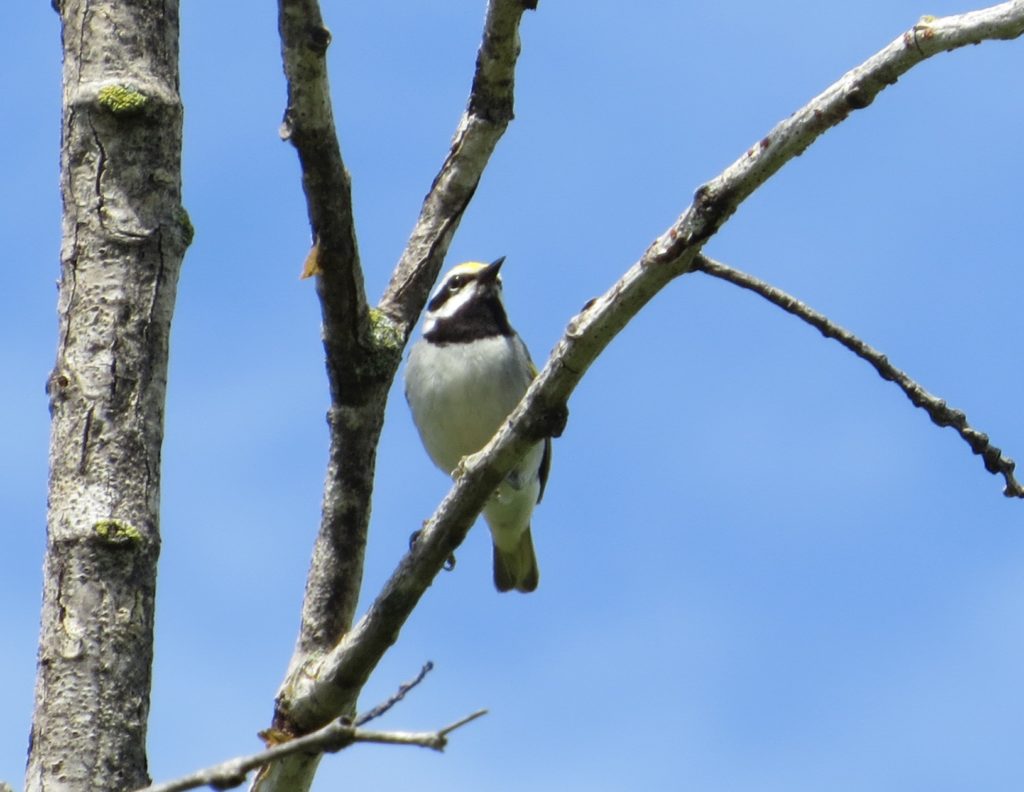Just like the birds themselves, birders have certain habits and habitat preferences at certain times of the year, almost reliably so. When August rolls around, most birders will seek out a good mudflat for some shorebird action. For me, though, my preferred birder habitat for August looks something like this:
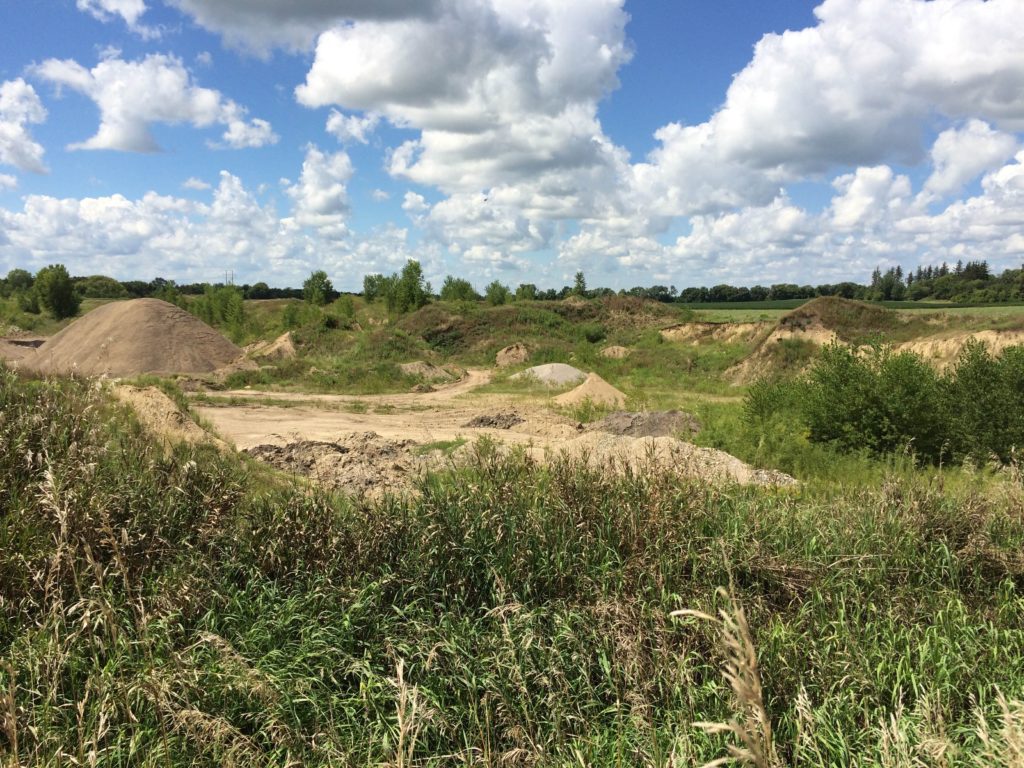
I explore gravel pits like this and other scrub lands in the hopes of finding one bird:
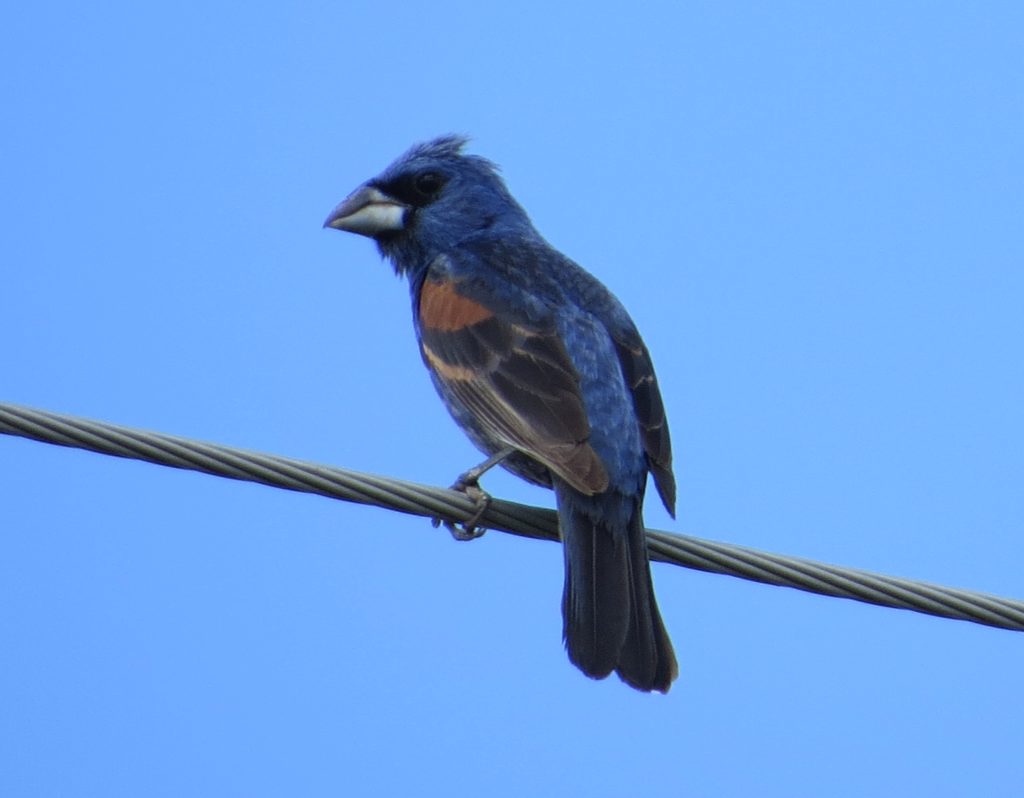
The Blue Grosbeak and its apparent range expansion fascinate me, especially since this bird has now been documented within just three miles of my home county, Kandiyohi. I became interested in this range expansion back in 2014 when it seemed there were more and more reports of these birds outside of their stronghold at Blue Mounds State Park in Rock County, the very southwestern corner of the state. Here is what the Blue Grosbeak eBird map looked like back in 2000.
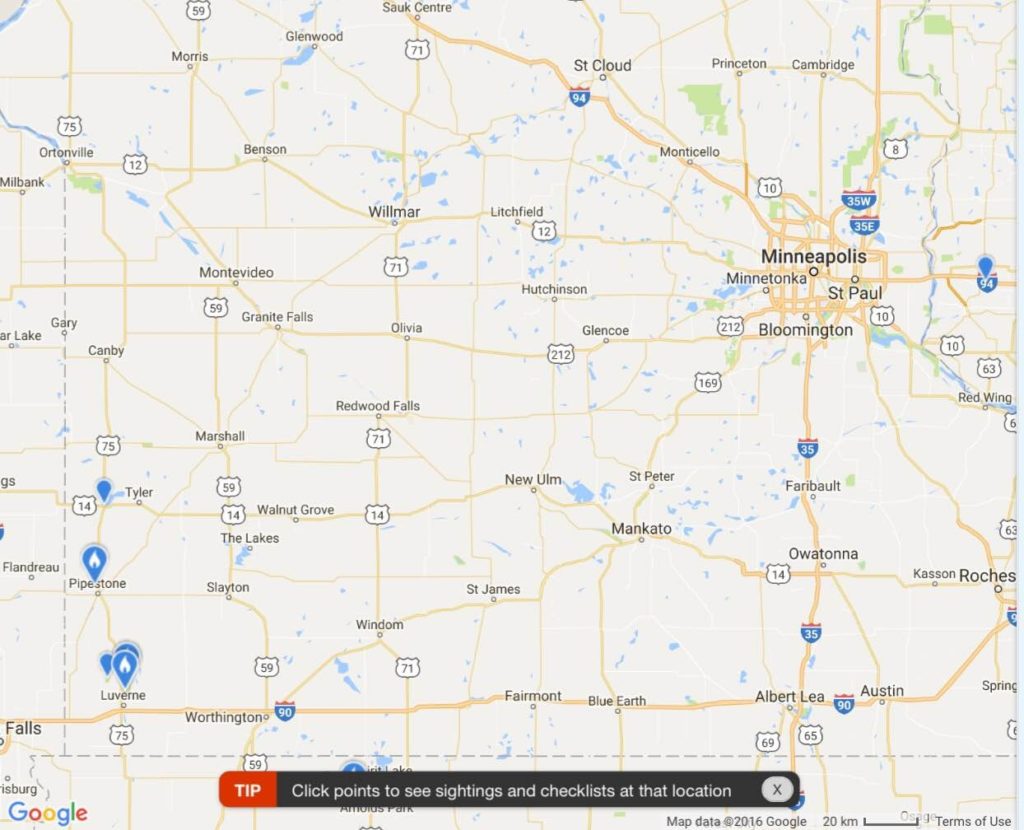 Fast forward to 2012, and it looked like this:
Fast forward to 2012, and it looked like this:
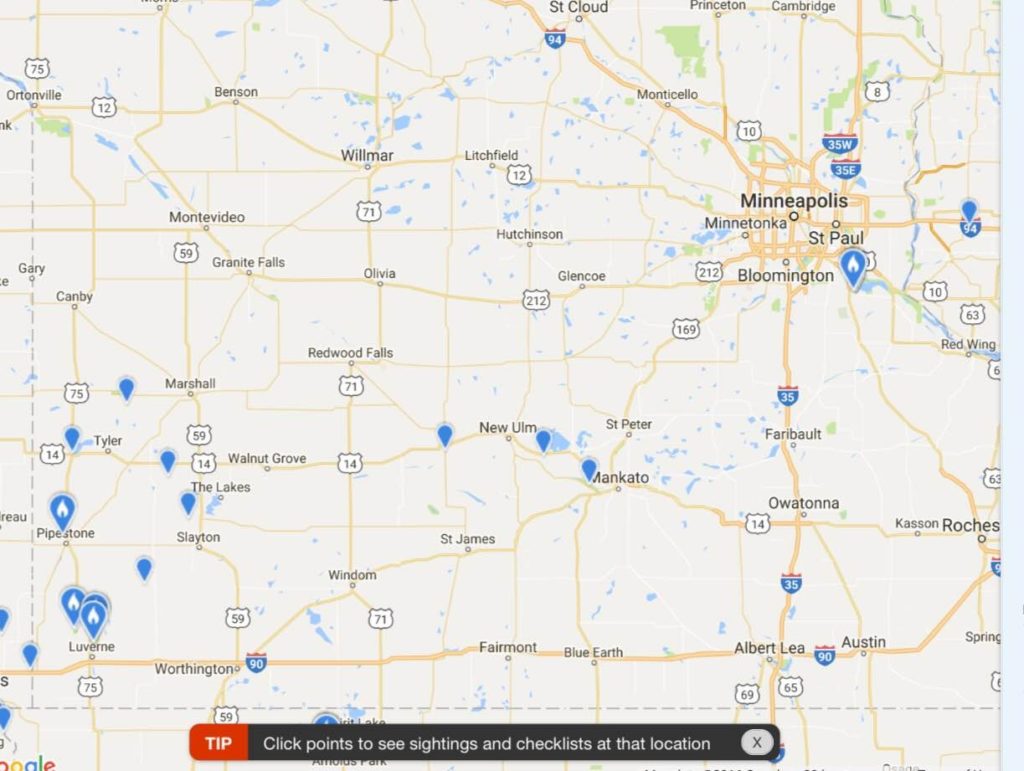 This uptick in Blue Grosbeak observations on eBird can partly be attributed to the beginning of eBird’s popularity in Minnesota and the tenacious efforts of people like Garrett Wee and Doug Kieser. Many of Minnesota’s experienced birders do not use eBird and have also been turning up Blue Grosbeaks outside of the “normal” Minnesota range of Rock County for years. But even some of these birders have told me that the Blue Grosbeak has definitely expanded its range and its numbers in Minnesota.
This uptick in Blue Grosbeak observations on eBird can partly be attributed to the beginning of eBird’s popularity in Minnesota and the tenacious efforts of people like Garrett Wee and Doug Kieser. Many of Minnesota’s experienced birders do not use eBird and have also been turning up Blue Grosbeaks outside of the “normal” Minnesota range of Rock County for years. But even some of these birders have told me that the Blue Grosbeak has definitely expanded its range and its numbers in Minnesota.
In 2014 when I became interested in this expansion, I used satellite imagery on Google Maps and eBird to find probable sites in northern Renville County. I was interested in Renville County because it bordered my home county of Kandiyohi, it was at the northeastern fringes of the Minnesota range for this bird, and because Joel Schmidt and Randy Frederickson saw a family group of Blue Grosbeaks in this area in 2012. So in using the satellite photos, I looked for new sites that showed gravel pits or any kind of disturbed earth. The success of that endeavor surpassed my expectations as I turned up four Blue Grosbeaks in four separate locations spanning a total of three miles. Other birders who followed up on my reports added even more Blue Grosbeaks. Not only did it appear the Blue Grosbeak had extended its range to northern Renville County, but it was thriving there. If you want to read my account of that Blue Grosbeak investigation, click here.
2015 was a bit of a disappointing year because I could not find Blue Grosbeaks at any of the sites I found them in 2014. Even still, I added one brand new Blue Grosbeak site in Renville County in 2015, and even more exciting was that Ron Erpelding and others found more Blue Grosbeaks north and west of the pocket of birds I found. This put Blue Grosbeaks within about three miles of the southwestern corner of Kandiyohi County. Here is the map to this day: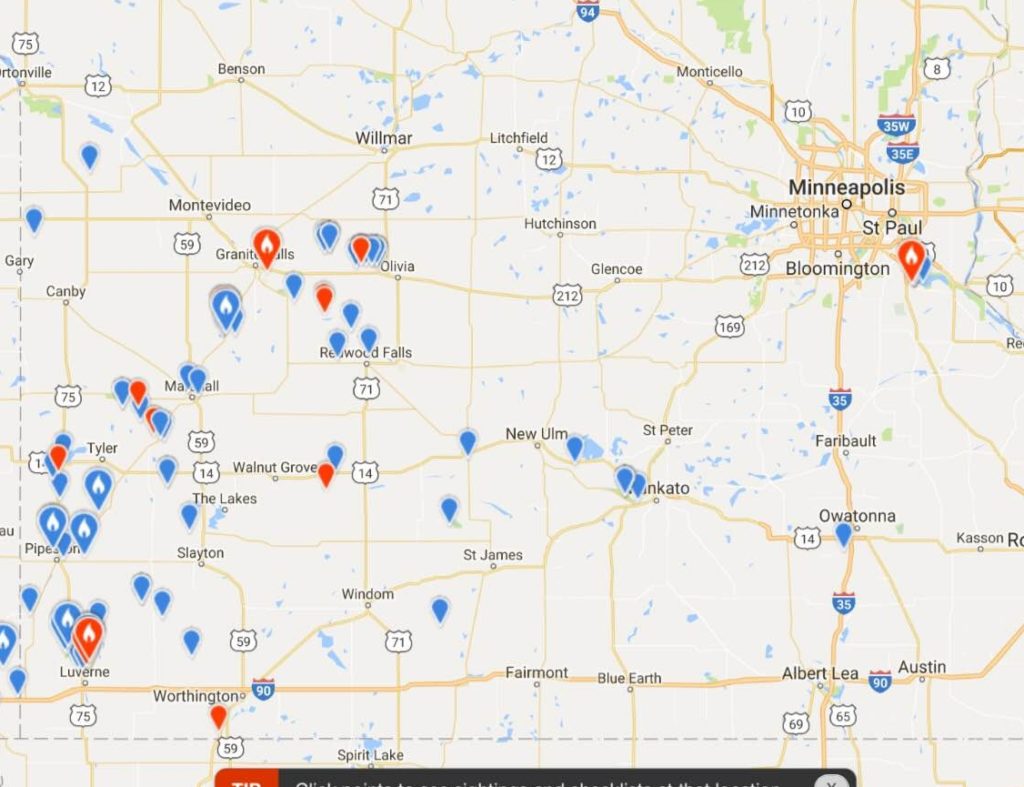
As you can see by the red markers, 2016 has been a good year too. Here’s a close-up of the area I’m interested in.
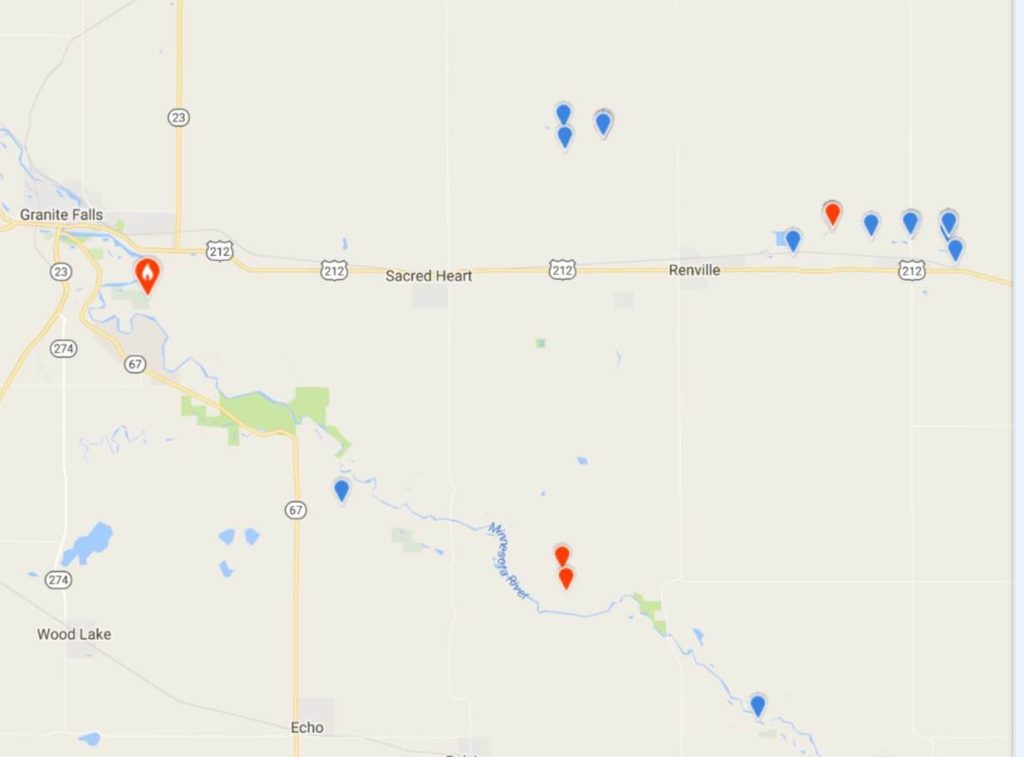
Even though this year’s recheck of the 2015 sites turned up negative, there has been a lot happening this past week in the hunt for Blue Grosbeak. A week ago I guided Pete Nichols and Ben Douglas around Chippewa and Renville Counties in the hopes of getting their BLGR state bird and life bird respectively, and we found two males at one of the 2014 sites! I was thrilled; they were thrilled. There was much high-fiving, especially since we got the bird at the last possible second before Pete and Ben had to leave.
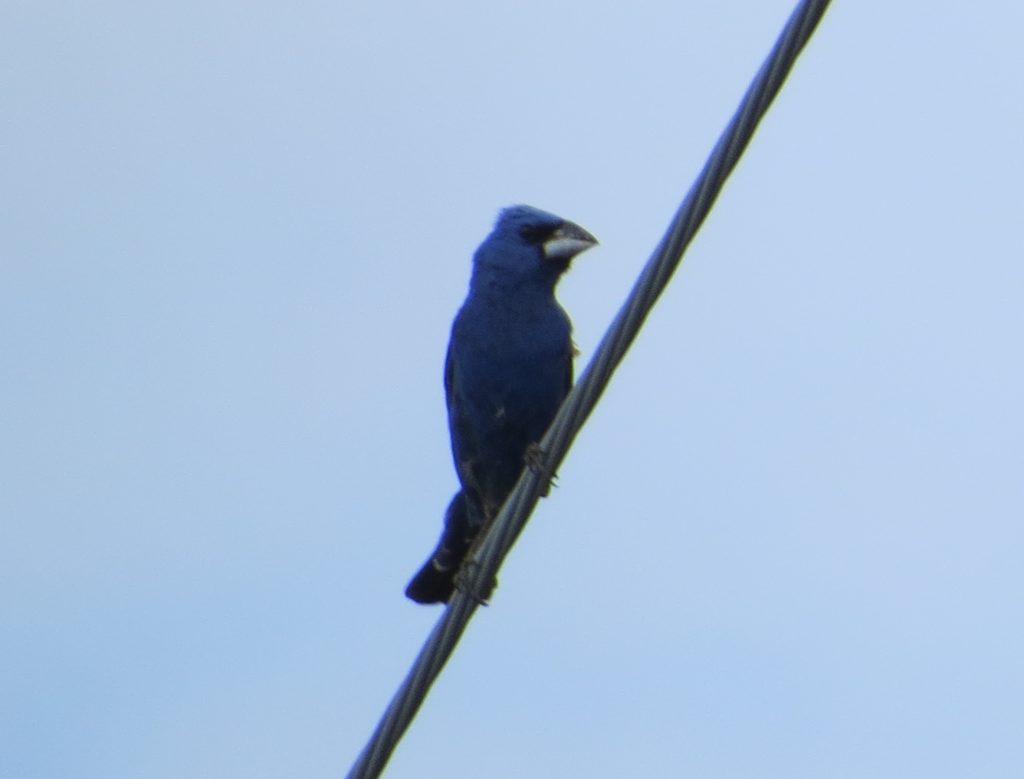
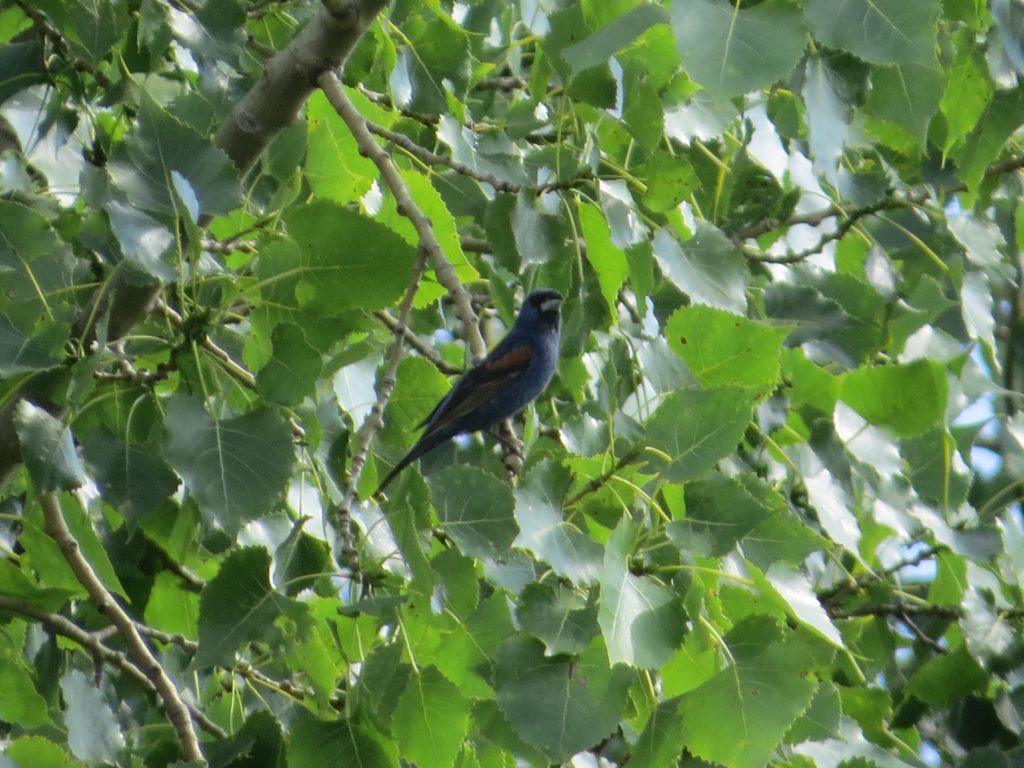 So that explains one of the red markers. Here’s the story (and photos) of the others. A couple days after the Renville sighting with Pete and Ben, I went to Gneiss Outcrops SNA in the very southeastern corner of Chippewa County to follow up on Bill Marengo’s earlier report of a Blue Grosbeak. Ron Erpelding and Herb Dingmann had found one here in 2014 that I was unsuccessful at relocating that same summer. However, I was able to find Bill’s bird this year.
So that explains one of the red markers. Here’s the story (and photos) of the others. A couple days after the Renville sighting with Pete and Ben, I went to Gneiss Outcrops SNA in the very southeastern corner of Chippewa County to follow up on Bill Marengo’s earlier report of a Blue Grosbeak. Ron Erpelding and Herb Dingmann had found one here in 2014 that I was unsuccessful at relocating that same summer. However, I was able to find Bill’s bird this year.
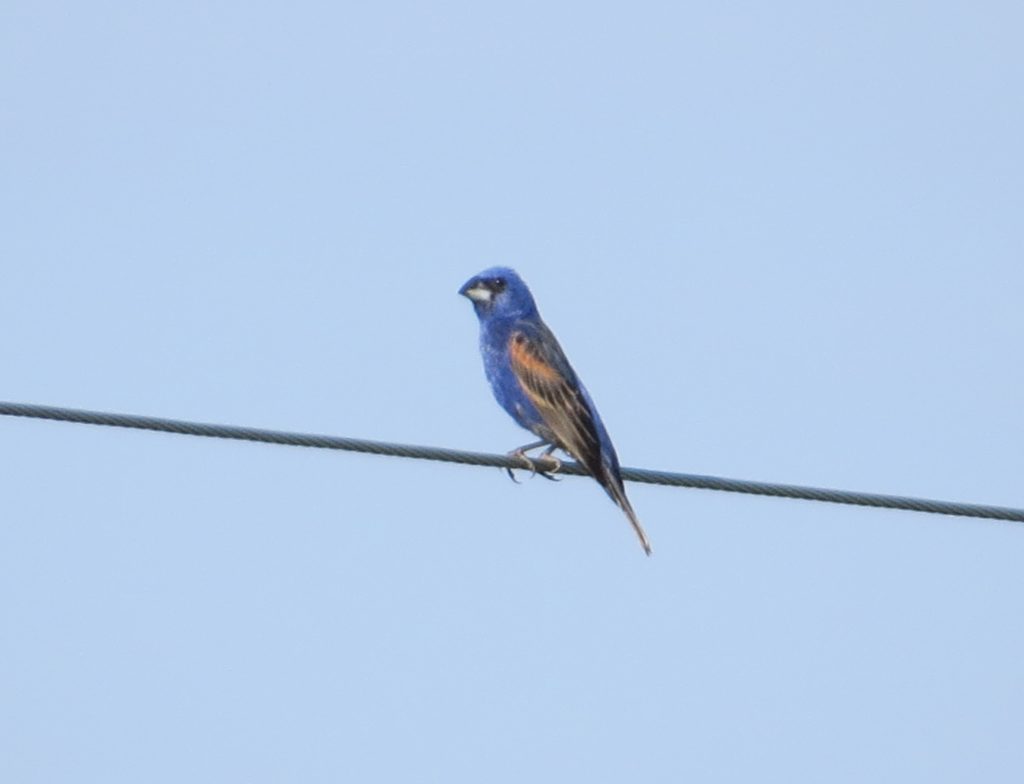
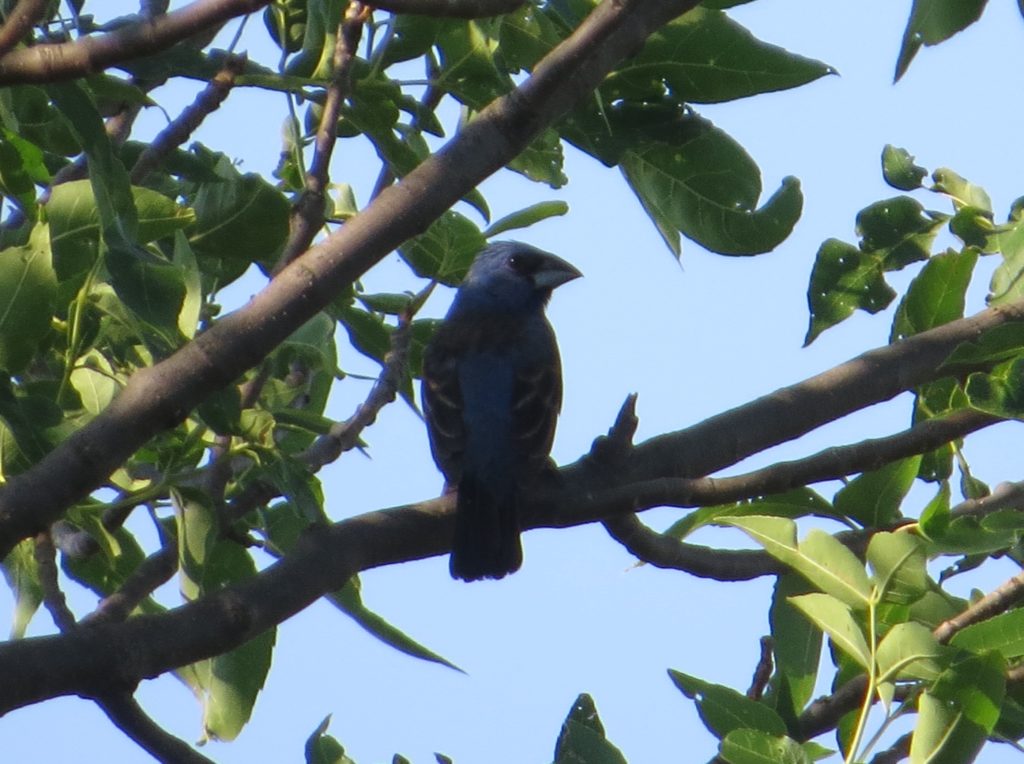 And just yesterday I checked some new-to-me sites in southern Renville County where birds had been reported by others in 2012 and 2013. It was a very successful recheck. At the gravel pit on 200th St (pictured at the beginning), I found this Blue Grosbeak and heard a second male.
And just yesterday I checked some new-to-me sites in southern Renville County where birds had been reported by others in 2012 and 2013. It was a very successful recheck. At the gravel pit on 200th St (pictured at the beginning), I found this Blue Grosbeak and heard a second male.
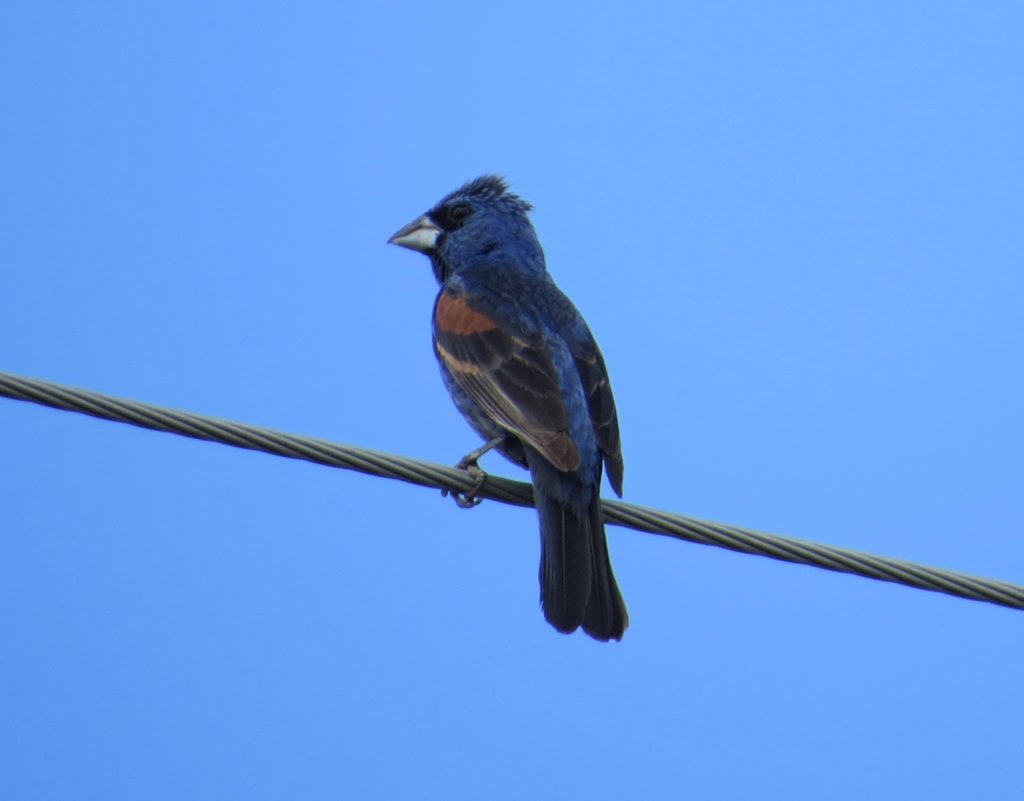
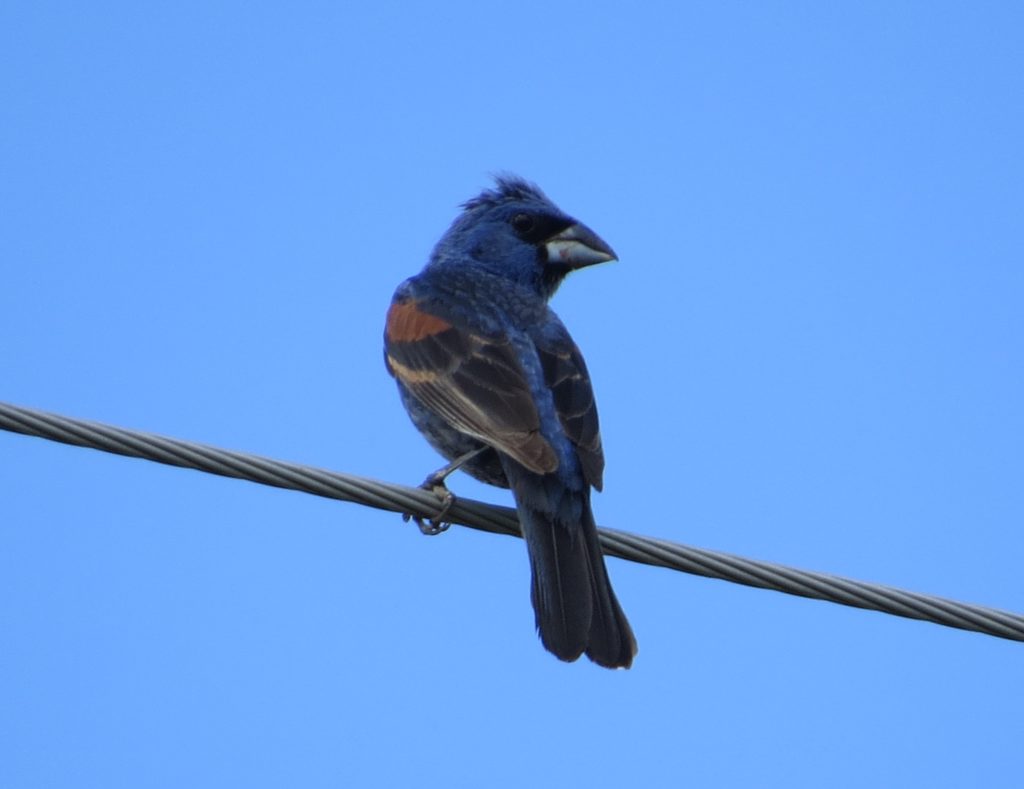
Not long after that and over a half mile from these two birds, I spied a suspicious-looking silhouette on a wire. It turned out to be yet another Blue Grosbeak!
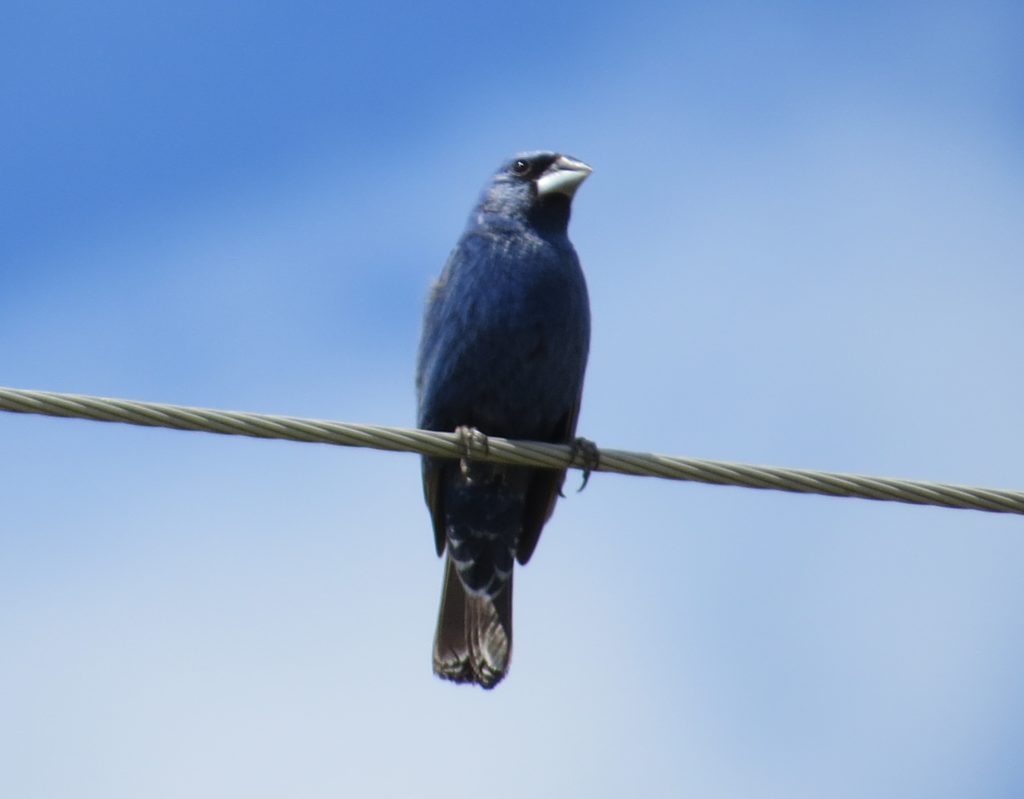 Finding five Blue Grosbeaks in Renville County and one in Chippewa County this past week has re-energized my interest in this bird’s range and population expansion. Lately I’ve started to think that gravel waste sites are not necessarily the only factor in finding this bird. I think proximity to water is a key element. Thinking back on all the Blue Grosbeaks I’ve found, there has either been a pond, a drainage ditch, or stream/river in very close proximity to the birds. This bird is often found in riparian areas in the south. I’m even wondering if water has actually been the cause of its range expansion. Could the river valleys and streams actually serve as conduits for its range expansion? Consider the stronghold of Rock County where the first MN Blue Grosbeaks were found–the Rock River runs right through it and the Big Sioux River that runs through Sioux Falls (a stronghold for BLGR sightings) is not far from there either. Then consider the Minnesota River Valley. Many Blue Grosbeak sightings have happened along the valley from Granite Falls all the way down to Mankato. Even the far northern sightings in Lac qui Parle County are within 30 miles of the Minnesota River. The pocket of birds I found in 2014 is about 12 miles from the MRV, so now when I look at satellite photos of the landscape, I get curious. Did the northern Renville County birds come up from the MRV along the creeks and drainage ditches?
Finding five Blue Grosbeaks in Renville County and one in Chippewa County this past week has re-energized my interest in this bird’s range and population expansion. Lately I’ve started to think that gravel waste sites are not necessarily the only factor in finding this bird. I think proximity to water is a key element. Thinking back on all the Blue Grosbeaks I’ve found, there has either been a pond, a drainage ditch, or stream/river in very close proximity to the birds. This bird is often found in riparian areas in the south. I’m even wondering if water has actually been the cause of its range expansion. Could the river valleys and streams actually serve as conduits for its range expansion? Consider the stronghold of Rock County where the first MN Blue Grosbeaks were found–the Rock River runs right through it and the Big Sioux River that runs through Sioux Falls (a stronghold for BLGR sightings) is not far from there either. Then consider the Minnesota River Valley. Many Blue Grosbeak sightings have happened along the valley from Granite Falls all the way down to Mankato. Even the far northern sightings in Lac qui Parle County are within 30 miles of the Minnesota River. The pocket of birds I found in 2014 is about 12 miles from the MRV, so now when I look at satellite photos of the landscape, I get curious. Did the northern Renville County birds come up from the MRV along the creeks and drainage ditches?
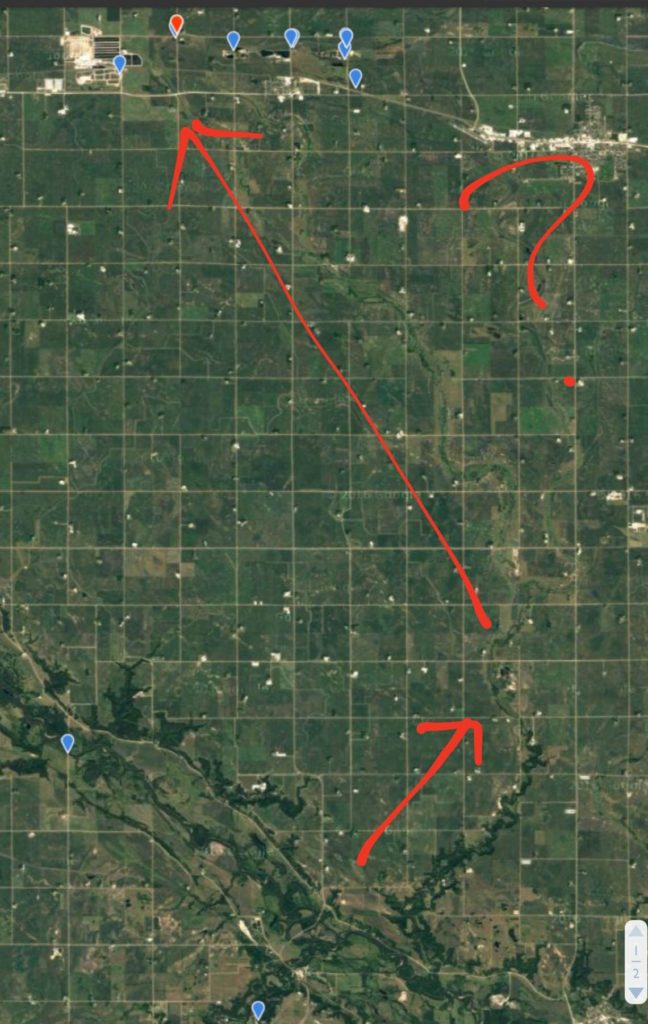
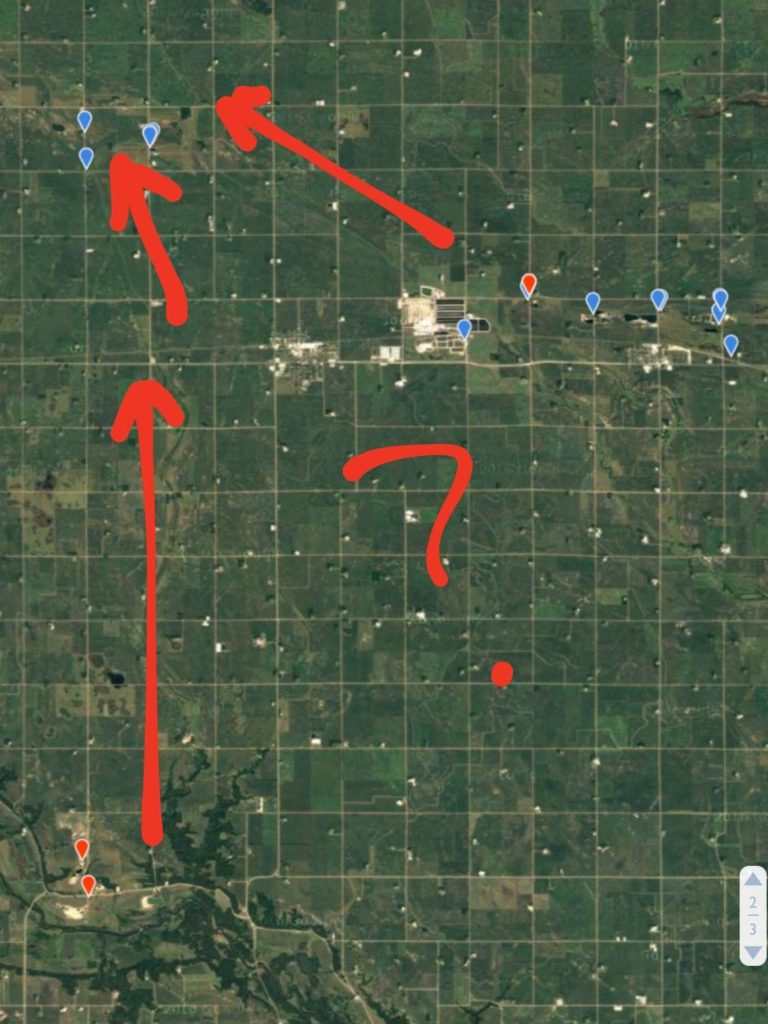
Could the Minnesota River playing a key role in the expansion of the Blue Grosbeak’s range across the entire state? Or is something more random going on? Right now this is just an idea that gets me out looking for Blue Grosbeaks and other birds in new locations. I get excited when I look at satellite imagery of Minnesota River tributaries and see stuff like this:
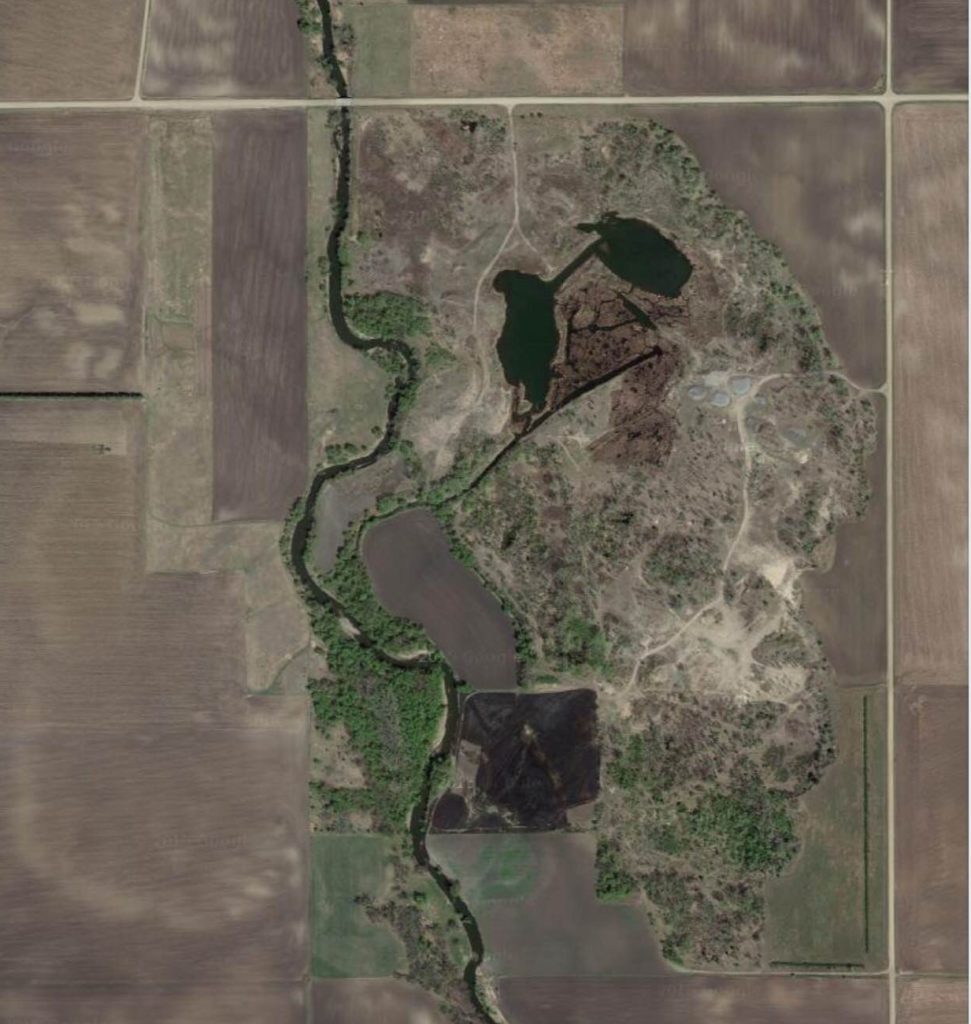 This spot turned out to be negative, by the way, at least from what I could hear/see from the roads during my brief check. However, there are a LOT of places where the roads transect these creeks and ditches in Renville County, so there are a lot of places to check. While I have found Blue Grosbeaks in gravel pits, I do not think that is the exclusive habitat preference for this bird. They are described in some literature to be habitat generalists that will occupy a variety of habitats in the southern U.S. where they are much more common. I would think any brushy or waste area in this bird’s Minnesota range could be good, especially the more numerous they become. One of the 2015 sites I was most excited about was just an ordinary farm yard.
This spot turned out to be negative, by the way, at least from what I could hear/see from the roads during my brief check. However, there are a LOT of places where the roads transect these creeks and ditches in Renville County, so there are a lot of places to check. While I have found Blue Grosbeaks in gravel pits, I do not think that is the exclusive habitat preference for this bird. They are described in some literature to be habitat generalists that will occupy a variety of habitats in the southern U.S. where they are much more common. I would think any brushy or waste area in this bird’s Minnesota range could be good, especially the more numerous they become. One of the 2015 sites I was most excited about was just an ordinary farm yard.
What does all this mean for Minnesota birders?
If you are birding anywhere south and just barely north of the Minnesota River that cuts through Minnesota like a giant V, Blue Grosbeaks should be on your radar as a possibility even if the habitat doesn’t have the classic “feel” of being an exposed gravel/waste area. Doug Kieser wrote in one of his eBird reports this summer that he was surprised to find a PAIR of Blue Grosbeaks while scanning a mowed hay field of all places. Most of us would be surprised because, through our Minnesota experiences with this bird, we tend to associate Blue Grosbeaks with their more typical habitat. Those more typical habitats south and barely north of the Minnesota River should ESPECIALLY be looked over carefully. Anywhere there are municipal brush sites, sewage lagoons, rock outcroppings, landfills, brush-filled drainage ditches and creeks, and yes, gravel pits, you may just find a brand new Blue Grosbeak.
Besides habitat/location, what else could help a Blue Grosbeak search be successful?
- Learn the song well. It’s pretty distinctive. Most of the Blue Grosbeaks I have found have been by hearing these loud singers first.
- If you are lucky enough to hear one, scan the tops of shrubs, trees, and other perches. They are conspicuous birds that often sing from high, open perches.
- Know the profile. This is something I have just keyed into lately that has helped me spot three non-singing Blue Grosbeaks from a distance, sometimes in bad light. Blue Grosbeaks have a near vertical posture when sitting on a wire, and they appear very top-heavy with that short tail. Their big, blocky head also helps set them apart from other wire-perching birds. Then there’s that massive, conical bill…
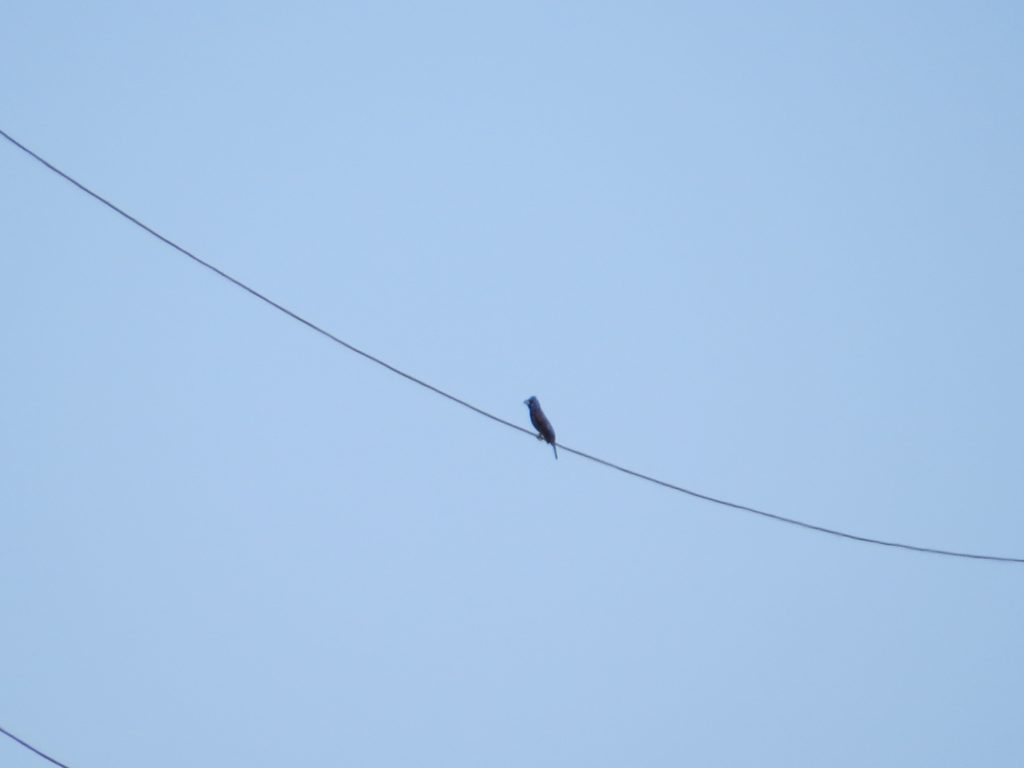 4. Don’t think of them as a rare bird in the previously described areas of Minnesota. If you expect to see them, you are more likely to stop the car to investigate a bird on a wire or drive slowly by a shrubby pasture with the windows down to listen for one. True story: I have seen/heard 11 Blue Grosbeaks in Renville County compared to just 2 Eastern Towhees there, yet the Blue Grosbeak is still considered rare in that county by eBird while the Towhee is an expected species.
4. Don’t think of them as a rare bird in the previously described areas of Minnesota. If you expect to see them, you are more likely to stop the car to investigate a bird on a wire or drive slowly by a shrubby pasture with the windows down to listen for one. True story: I have seen/heard 11 Blue Grosbeaks in Renville County compared to just 2 Eastern Towhees there, yet the Blue Grosbeak is still considered rare in that county by eBird while the Towhee is an expected species.
Final Thought
Most of the Blue Grosbeaks sightings on eBird are fairly well pinpointed and therefore chaseable. And, if you’ve never seen one before, by all means, go look for one of those. But if you have seen one already, strike out on your own and turn up a brand new Blue Grosbeak. I guarantee you’ll have a lot more fun exploring and discovering something new than chasing something old. Who knows, you may have one a lot closer to home than you thought!
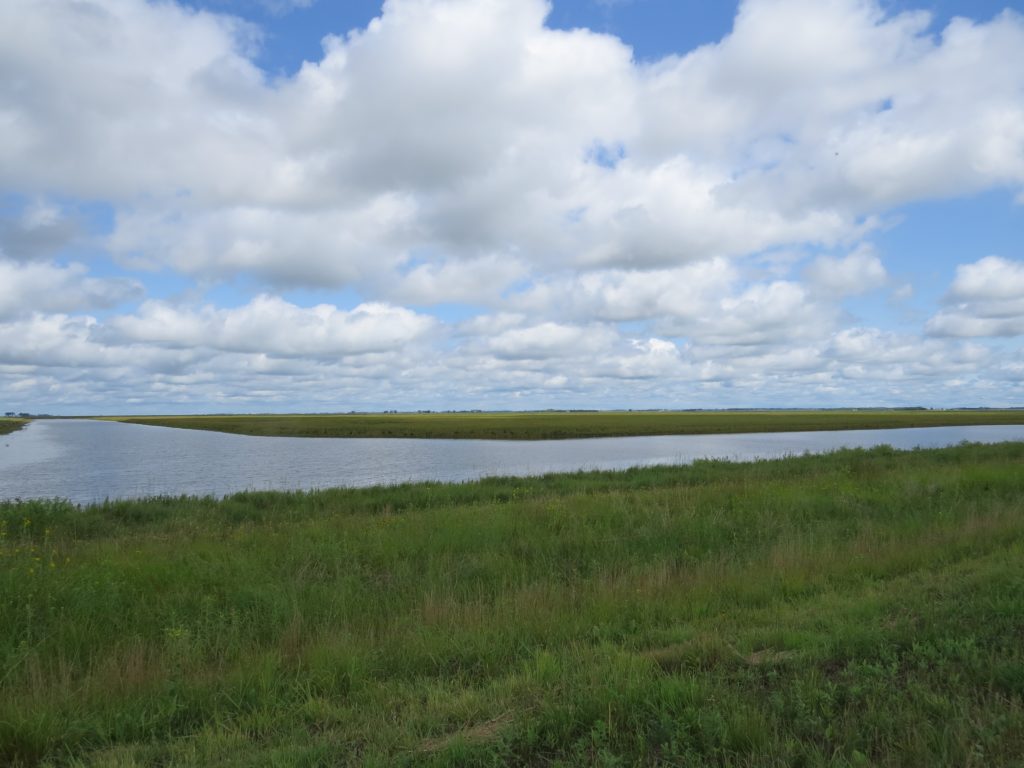 It was fun to return to this area. Two years prior, Randy Frederickson, Evan, and I came up here for a tidy haul of good birds in one trip: White-winged Dove, Cattle Egrets, Black-necked Stilts, and Loggerhead Shrike. This time I was looking for another great gift from Grant, and luckily, I found it.
It was fun to return to this area. Two years prior, Randy Frederickson, Evan, and I came up here for a tidy haul of good birds in one trip: White-winged Dove, Cattle Egrets, Black-necked Stilts, and Loggerhead Shrike. This time I was looking for another great gift from Grant, and luckily, I found it.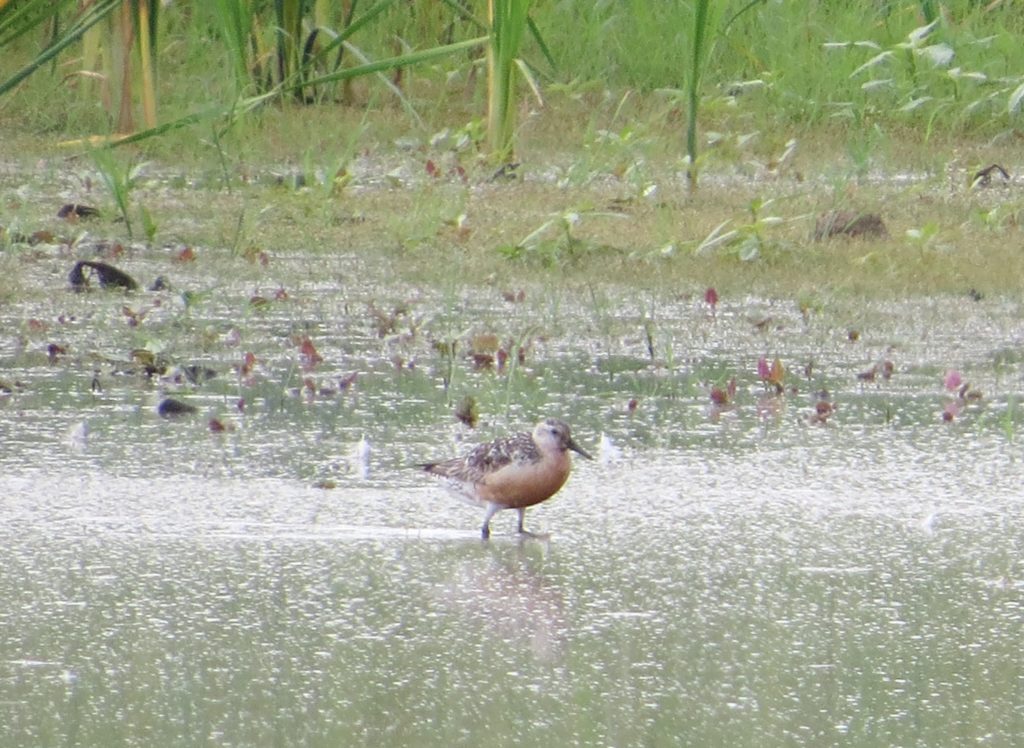 Initially I couldn’t find it and panicked since Joel Schmidt had just been there before me and assured me it was still there. It took me a good ten minutes to finally spot it, and I may or may not have been crabby and short with the kids during those tense first few minutes as they loudly pestered one another in the backseat to fight off the boredom. But with the chubby red bird now officially in sight, I was much more at ease and took things in stride.
Initially I couldn’t find it and panicked since Joel Schmidt had just been there before me and assured me it was still there. It took me a good ten minutes to finally spot it, and I may or may not have been crabby and short with the kids during those tense first few minutes as they loudly pestered one another in the backseat to fight off the boredom. But with the chubby red bird now officially in sight, I was much more at ease and took things in stride.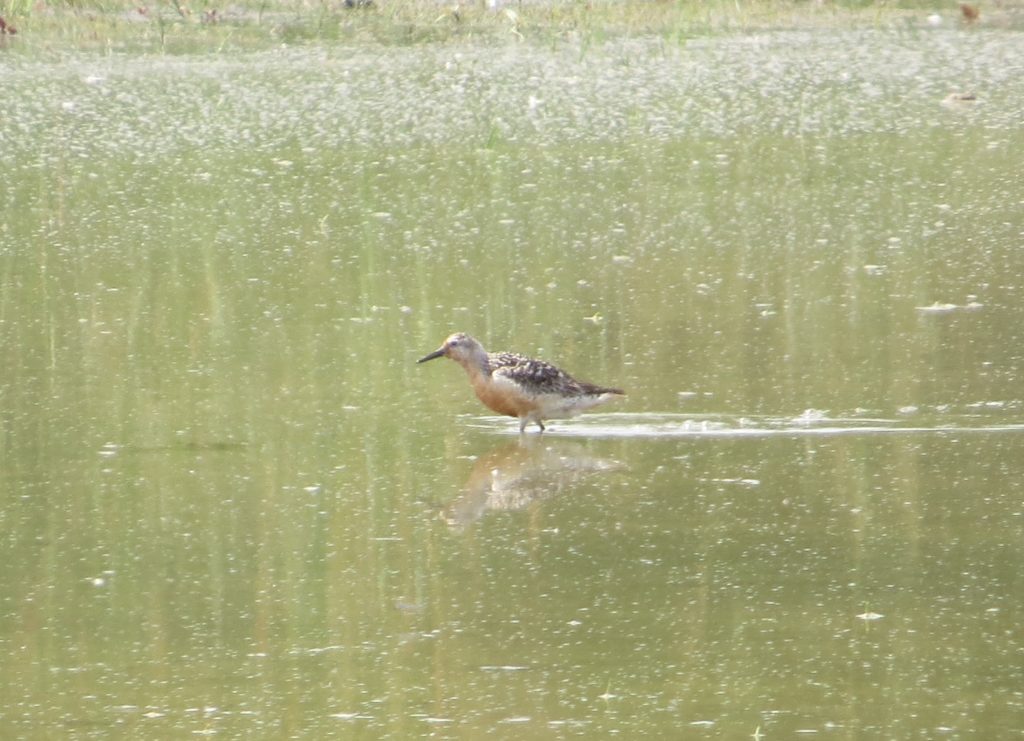
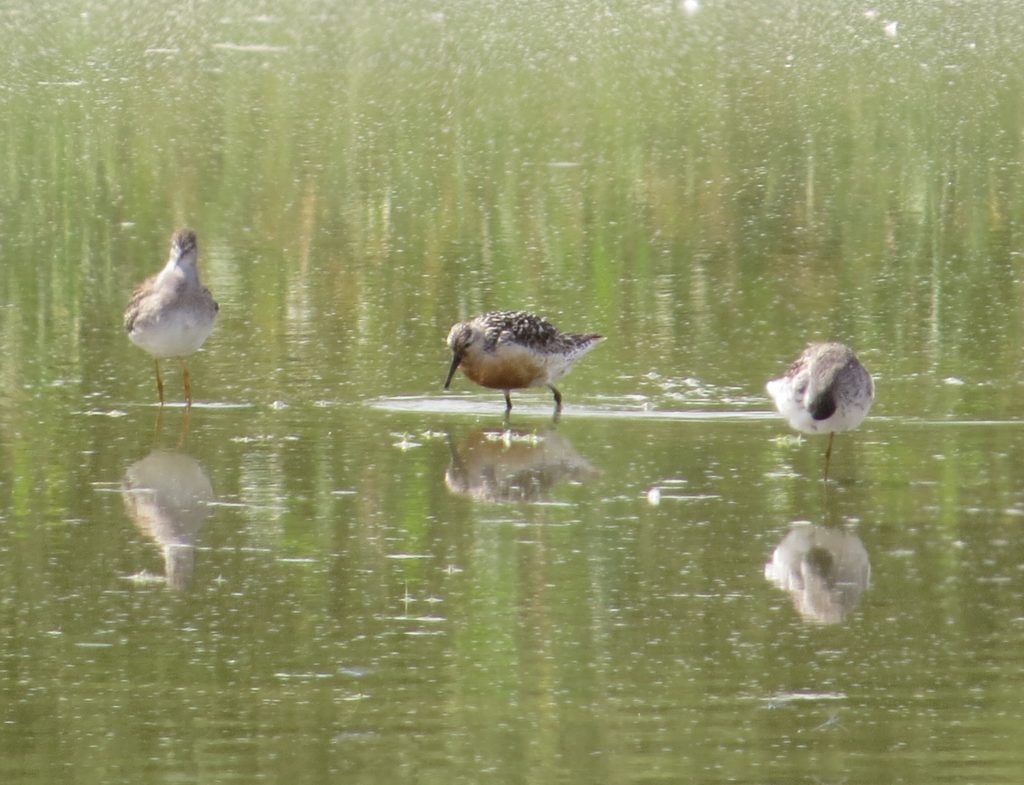
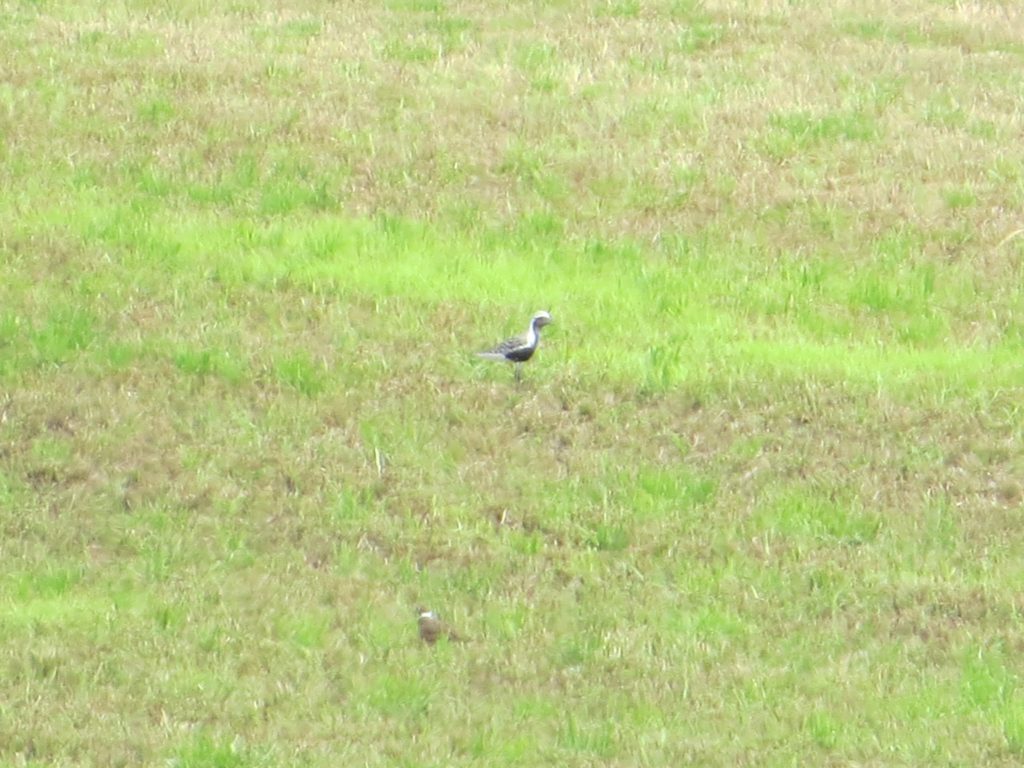 Eventually Joel and I found the Buff-breasteds and eventually I did get those kids home. After all, we had a lot of things to do at home, like get ready for out-of-state birding trip to grab some lifers and do some other fun things. That story is coming next.
Eventually Joel and I found the Buff-breasteds and eventually I did get those kids home. After all, we had a lot of things to do at home, like get ready for out-of-state birding trip to grab some lifers and do some other fun things. That story is coming next.
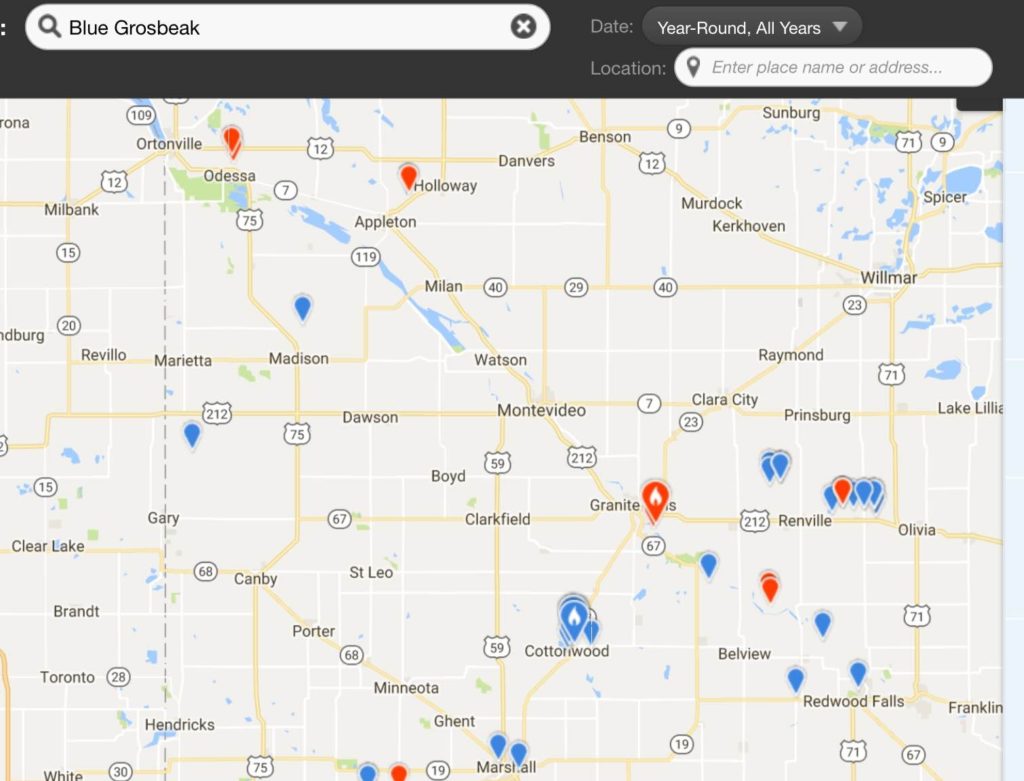
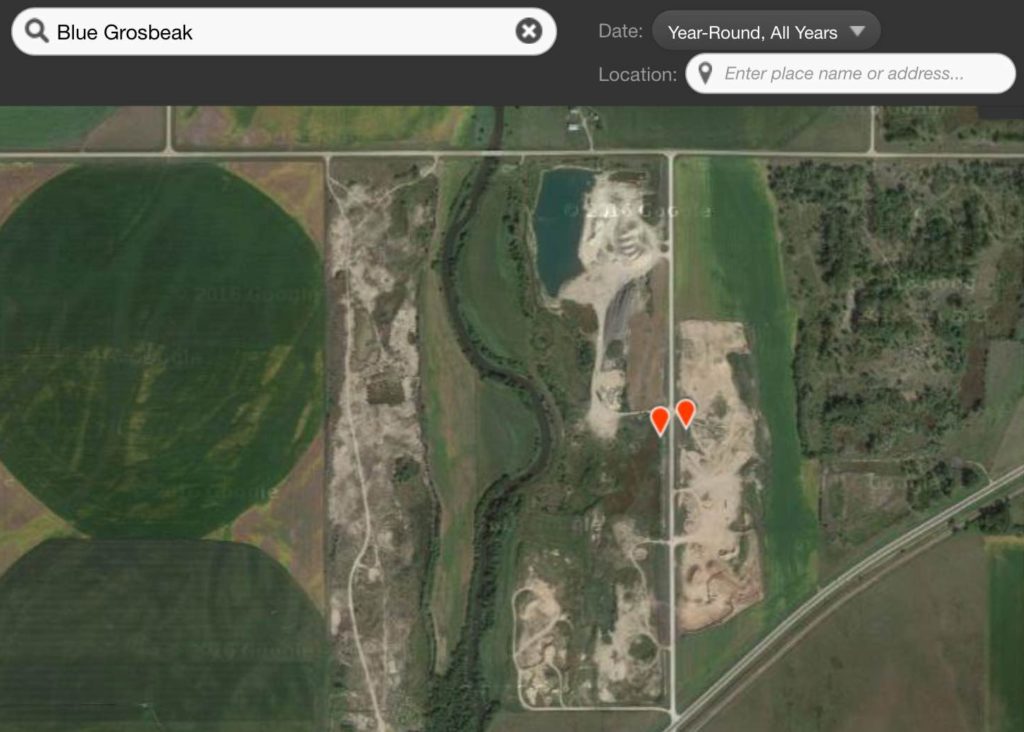


 Fast forward to 2012, and it looked like this:
Fast forward to 2012, and it looked like this: This uptick in Blue Grosbeak observations on eBird can partly be attributed to the beginning of eBird’s popularity in Minnesota and the tenacious efforts of people like Garrett Wee and Doug Kieser. Many of Minnesota’s experienced birders do not use eBird and have also been turning up Blue Grosbeaks outside of the “normal” Minnesota range of Rock County for years. But even some of these birders have told me that the Blue Grosbeak has definitely expanded its range and its numbers in Minnesota.
This uptick in Blue Grosbeak observations on eBird can partly be attributed to the beginning of eBird’s popularity in Minnesota and the tenacious efforts of people like Garrett Wee and Doug Kieser. Many of Minnesota’s experienced birders do not use eBird and have also been turning up Blue Grosbeaks outside of the “normal” Minnesota range of Rock County for years. But even some of these birders have told me that the Blue Grosbeak has definitely expanded its range and its numbers in Minnesota.


 So that explains one of the red markers. Here’s the story (and photos) of the others. A couple days after the Renville sighting with Pete and Ben, I went to Gneiss Outcrops SNA in the very southeastern corner of Chippewa County to follow up on Bill Marengo’s earlier report of a Blue Grosbeak. Ron Erpelding and Herb Dingmann had found one here in 2014 that I was unsuccessful at relocating that same summer. However, I was able to find Bill’s bird this year.
So that explains one of the red markers. Here’s the story (and photos) of the others. A couple days after the Renville sighting with Pete and Ben, I went to Gneiss Outcrops SNA in the very southeastern corner of Chippewa County to follow up on Bill Marengo’s earlier report of a Blue Grosbeak. Ron Erpelding and Herb Dingmann had found one here in 2014 that I was unsuccessful at relocating that same summer. However, I was able to find Bill’s bird this year.
 And just yesterday I checked some new-to-me sites in southern Renville County where birds had been reported by others in 2012 and 2013. It was a very successful recheck. At the gravel pit on 200th St (pictured at the beginning), I found this Blue Grosbeak and heard a second male.
And just yesterday I checked some new-to-me sites in southern Renville County where birds had been reported by others in 2012 and 2013. It was a very successful recheck. At the gravel pit on 200th St (pictured at the beginning), I found this Blue Grosbeak and heard a second male.

 Finding five Blue Grosbeaks in Renville County and one in Chippewa County this past week has re-energized my interest in this bird’s range and population expansion. Lately I’ve started to think that gravel waste sites are not necessarily the only factor in finding this bird. I think proximity to water is a key element. Thinking back on all the Blue Grosbeaks I’ve found, there has either been a pond, a drainage ditch, or stream/river in very close proximity to the birds. This bird is often found in riparian areas in the south. I’m even wondering if water has actually been the cause of its range expansion. Could the river valleys and streams actually serve as conduits for its range expansion? Consider the stronghold of Rock County where the first MN Blue Grosbeaks were found–the Rock River runs right through it and the Big Sioux River that runs through Sioux Falls (a stronghold for BLGR sightings) is not far from there either. Then consider the Minnesota River Valley. Many Blue Grosbeak sightings have happened along the valley from Granite Falls all the way down to Mankato. Even the far northern sightings in Lac qui Parle County are within 30 miles of the Minnesota River. The pocket of birds I found in 2014 is about 12 miles from the MRV, so now when I look at satellite photos of the landscape, I get curious. Did the northern Renville County birds come up from the MRV along the creeks and drainage ditches?
Finding five Blue Grosbeaks in Renville County and one in Chippewa County this past week has re-energized my interest in this bird’s range and population expansion. Lately I’ve started to think that gravel waste sites are not necessarily the only factor in finding this bird. I think proximity to water is a key element. Thinking back on all the Blue Grosbeaks I’ve found, there has either been a pond, a drainage ditch, or stream/river in very close proximity to the birds. This bird is often found in riparian areas in the south. I’m even wondering if water has actually been the cause of its range expansion. Could the river valleys and streams actually serve as conduits for its range expansion? Consider the stronghold of Rock County where the first MN Blue Grosbeaks were found–the Rock River runs right through it and the Big Sioux River that runs through Sioux Falls (a stronghold for BLGR sightings) is not far from there either. Then consider the Minnesota River Valley. Many Blue Grosbeak sightings have happened along the valley from Granite Falls all the way down to Mankato. Even the far northern sightings in Lac qui Parle County are within 30 miles of the Minnesota River. The pocket of birds I found in 2014 is about 12 miles from the MRV, so now when I look at satellite photos of the landscape, I get curious. Did the northern Renville County birds come up from the MRV along the creeks and drainage ditches?

 This spot turned out to be negative, by the way, at least from what I could hear/see from the roads during my brief check. However, there are a LOT of places where the roads transect these creeks and ditches in Renville County, so there are a lot of places to check. While I have found Blue Grosbeaks in gravel pits, I do not think that is the exclusive habitat preference for this bird. They are described in some literature to be habitat generalists that will occupy a variety of habitats in the southern U.S. where they are much more common. I would think any brushy or waste area in this bird’s Minnesota range could be good, especially the more numerous they become. One of the 2015 sites I was most excited about was just an ordinary farm yard.
This spot turned out to be negative, by the way, at least from what I could hear/see from the roads during my brief check. However, there are a LOT of places where the roads transect these creeks and ditches in Renville County, so there are a lot of places to check. While I have found Blue Grosbeaks in gravel pits, I do not think that is the exclusive habitat preference for this bird. They are described in some literature to be habitat generalists that will occupy a variety of habitats in the southern U.S. where they are much more common. I would think any brushy or waste area in this bird’s Minnesota range could be good, especially the more numerous they become. One of the 2015 sites I was most excited about was just an ordinary farm yard. 4. Don’t think of them as a rare bird in the previously described areas of Minnesota. If you expect to see them, you are more likely to stop the car to investigate a bird on a wire or drive slowly by a shrubby pasture with the windows down to listen for one. True story: I have seen/heard 11 Blue Grosbeaks in Renville County compared to just 2 Eastern Towhees there, yet the Blue Grosbeak is still considered rare in that county by eBird while the Towhee is an expected species.
4. Don’t think of them as a rare bird in the previously described areas of Minnesota. If you expect to see them, you are more likely to stop the car to investigate a bird on a wire or drive slowly by a shrubby pasture with the windows down to listen for one. True story: I have seen/heard 11 Blue Grosbeaks in Renville County compared to just 2 Eastern Towhees there, yet the Blue Grosbeak is still considered rare in that county by eBird while the Towhee is an expected species.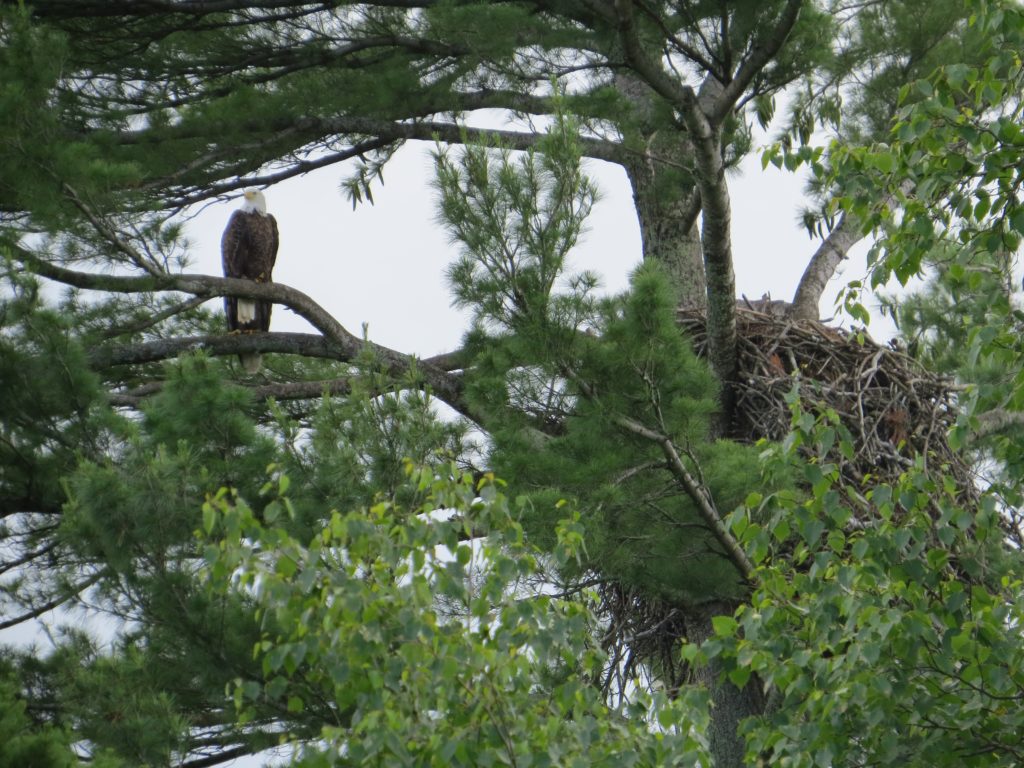 It’s also how you can point out to Grandma during that all-day gathering that the bird that flushes from the house each time someone goes in or out is actually a pretty cool bird and not some lame Robin that none of us can stand to have making a mess on our house.
It’s also how you can point out to Grandma during that all-day gathering that the bird that flushes from the house each time someone goes in or out is actually a pretty cool bird and not some lame Robin that none of us can stand to have making a mess on our house.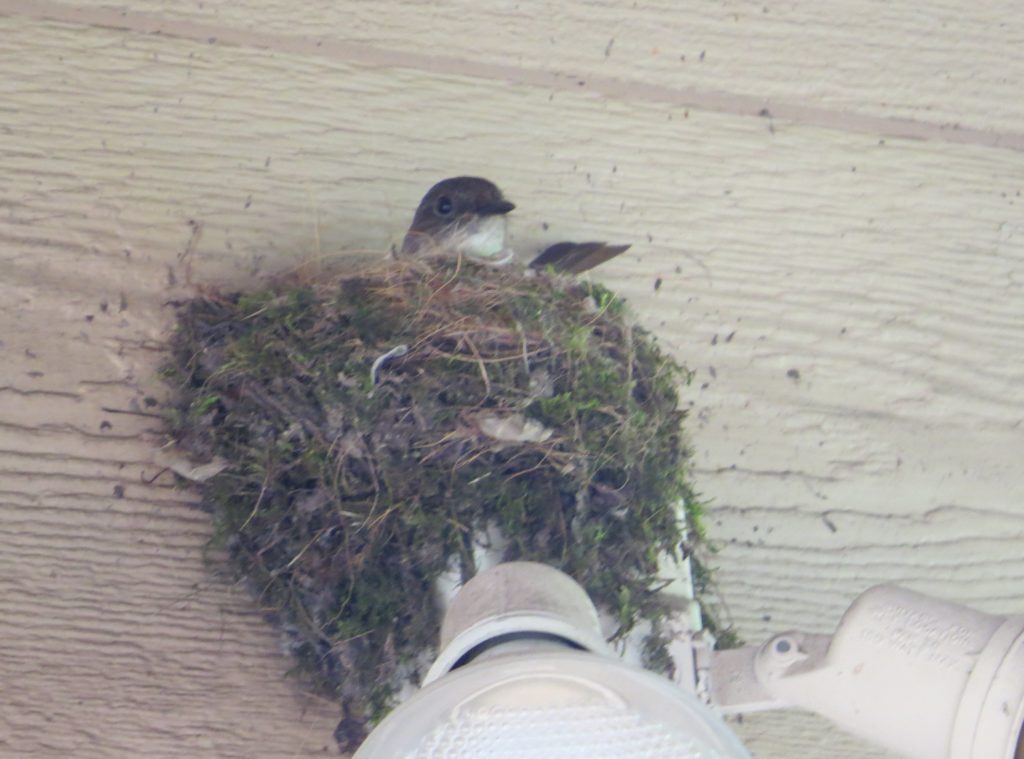 Unlike the Robin, the Eastern Phoebe’s nest is quite aesthetically pleasing and well-constructed.
Unlike the Robin, the Eastern Phoebe’s nest is quite aesthetically pleasing and well-constructed.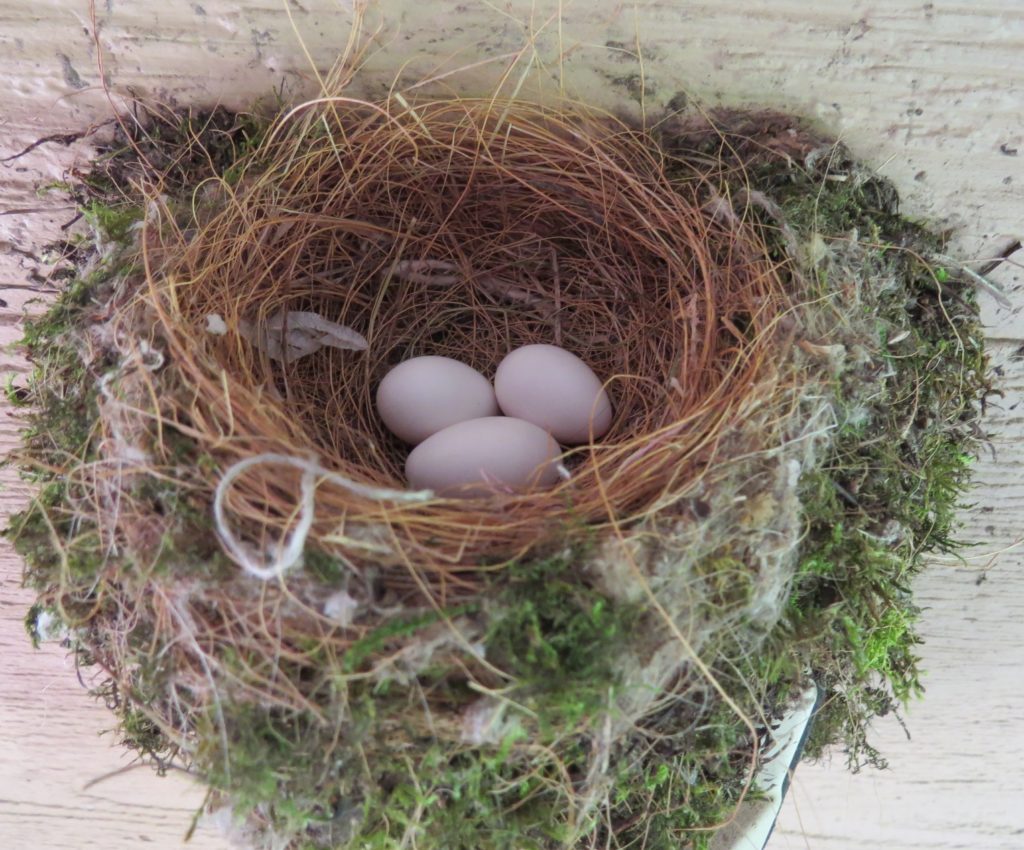 I almost passed on the opportunity to get crushing photos of the most accommodating Eastern Phoebe I’ve ever seen. That would have been a shame.
I almost passed on the opportunity to get crushing photos of the most accommodating Eastern Phoebe I’ve ever seen. That would have been a shame.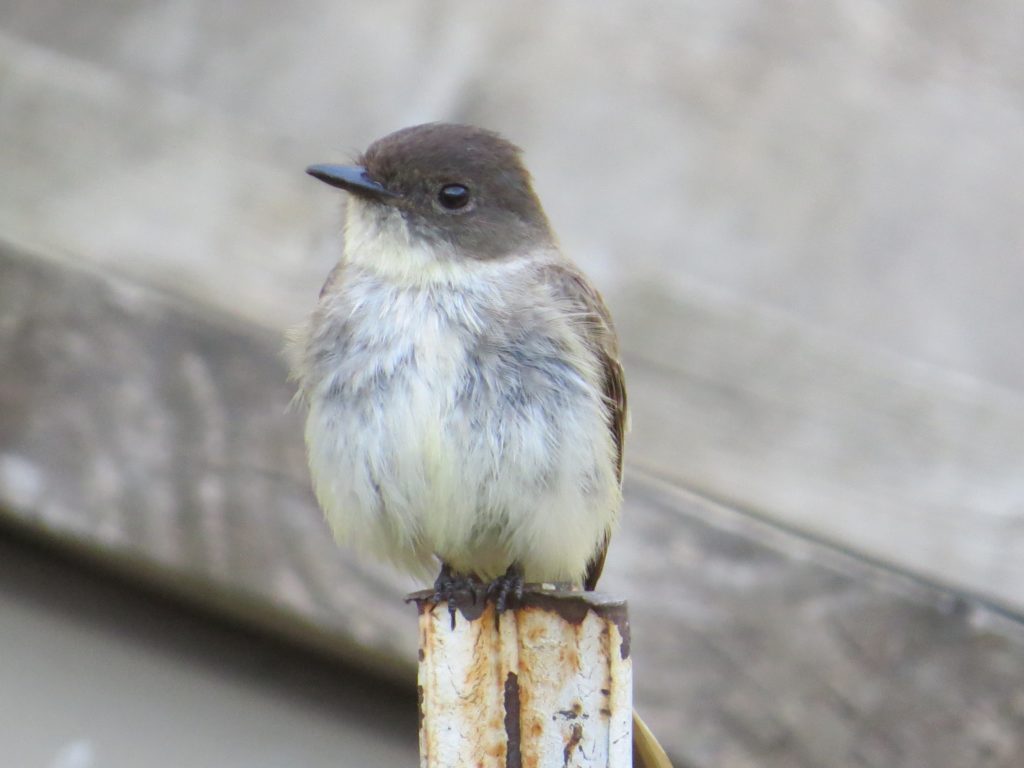
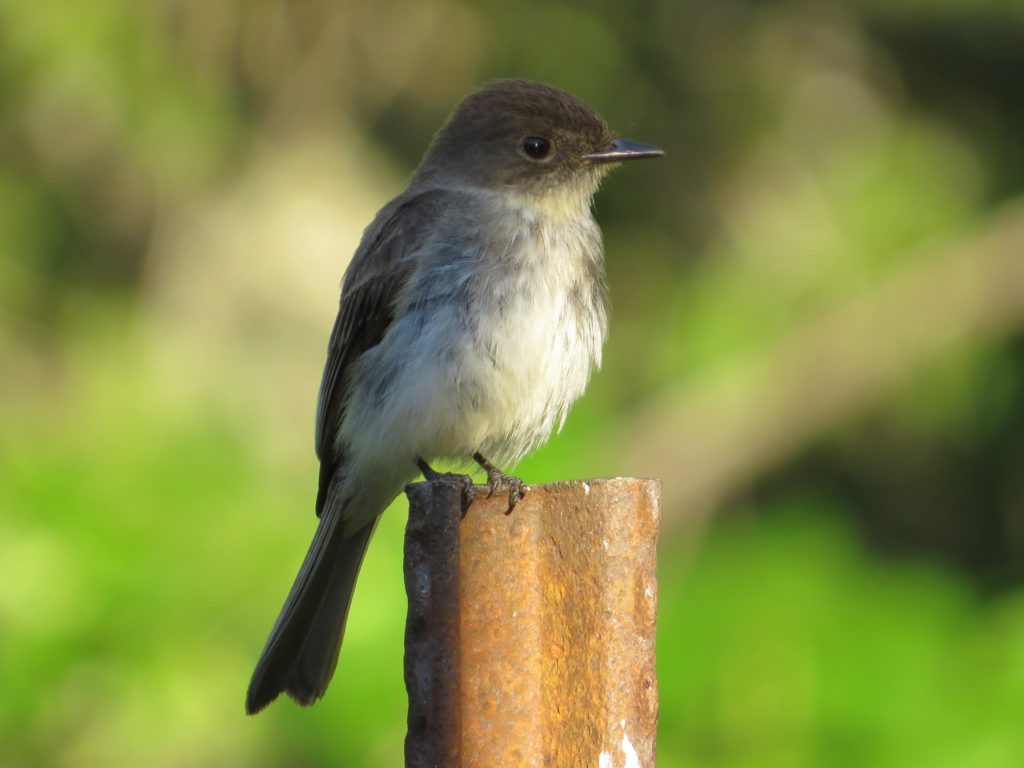 But don’t let me fool you, it wasn’t all incidental birding. I was in northern Minnesota, after all, a land ripe with fascinating birds in all seasons. Local birding friend, Julie, had told me about a Connecticut Warbler she had recently found in a Black Spruce/Tamarack bog not more than 20 minutes from my parents’ house. The Connecticut was a bird I had previously only had as heard-only in the Sax-Zim Bog, so I rose early one morning donning some knee-high rubber boots, long sleeves, long pants, and an unhealthy dousing of bug spray. I was going all in to mosquito central. No sane person does this.
But don’t let me fool you, it wasn’t all incidental birding. I was in northern Minnesota, after all, a land ripe with fascinating birds in all seasons. Local birding friend, Julie, had told me about a Connecticut Warbler she had recently found in a Black Spruce/Tamarack bog not more than 20 minutes from my parents’ house. The Connecticut was a bird I had previously only had as heard-only in the Sax-Zim Bog, so I rose early one morning donning some knee-high rubber boots, long sleeves, long pants, and an unhealthy dousing of bug spray. I was going all in to mosquito central. No sane person does this.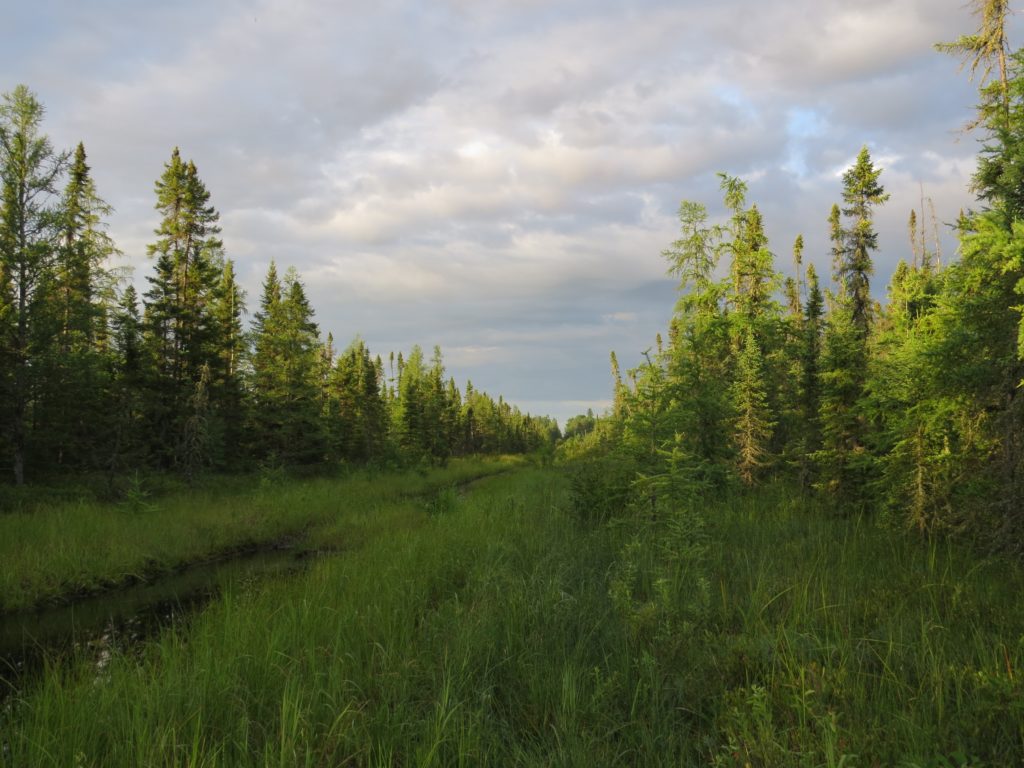 But we die-hard birders do, especially when we think of the possible reward of visuals of a skulker like the Connecticut. It’s worth some welts and the loss of a little sleep. Julie had made things easy for me by marking a tree where the Connecticut had set up a territory along this abandoned, water-logged road pictured above. However, as we are getting into July, the Warblers just don’t sing as much. When I got to the spot after hiking a quarter mile, I didn’t hear it. But patience eventually rewarded me with that clear, ringing sound of the Connecticut: “Bea-cher, bea-cher, bea-cherbeach!” After waiting it out a little longer, I did get some great up-close looks, but I wasn’t quick enough to get a photo. Seeing one was a good improvement on my heard-only lifer, but I really wanted that photo. Maybe this Warbler was busy with a nest because it never did show itself again despite me waiting for an insane amount of time in the cloud of mosquitoes. I finally decided to call it quits and head back to rejoin the family. A heard-only Boreal Chickadee and a Lincoln’s Sparrow were a couple of good birds on the hike out.
But we die-hard birders do, especially when we think of the possible reward of visuals of a skulker like the Connecticut. It’s worth some welts and the loss of a little sleep. Julie had made things easy for me by marking a tree where the Connecticut had set up a territory along this abandoned, water-logged road pictured above. However, as we are getting into July, the Warblers just don’t sing as much. When I got to the spot after hiking a quarter mile, I didn’t hear it. But patience eventually rewarded me with that clear, ringing sound of the Connecticut: “Bea-cher, bea-cher, bea-cherbeach!” After waiting it out a little longer, I did get some great up-close looks, but I wasn’t quick enough to get a photo. Seeing one was a good improvement on my heard-only lifer, but I really wanted that photo. Maybe this Warbler was busy with a nest because it never did show itself again despite me waiting for an insane amount of time in the cloud of mosquitoes. I finally decided to call it quits and head back to rejoin the family. A heard-only Boreal Chickadee and a Lincoln’s Sparrow were a couple of good birds on the hike out.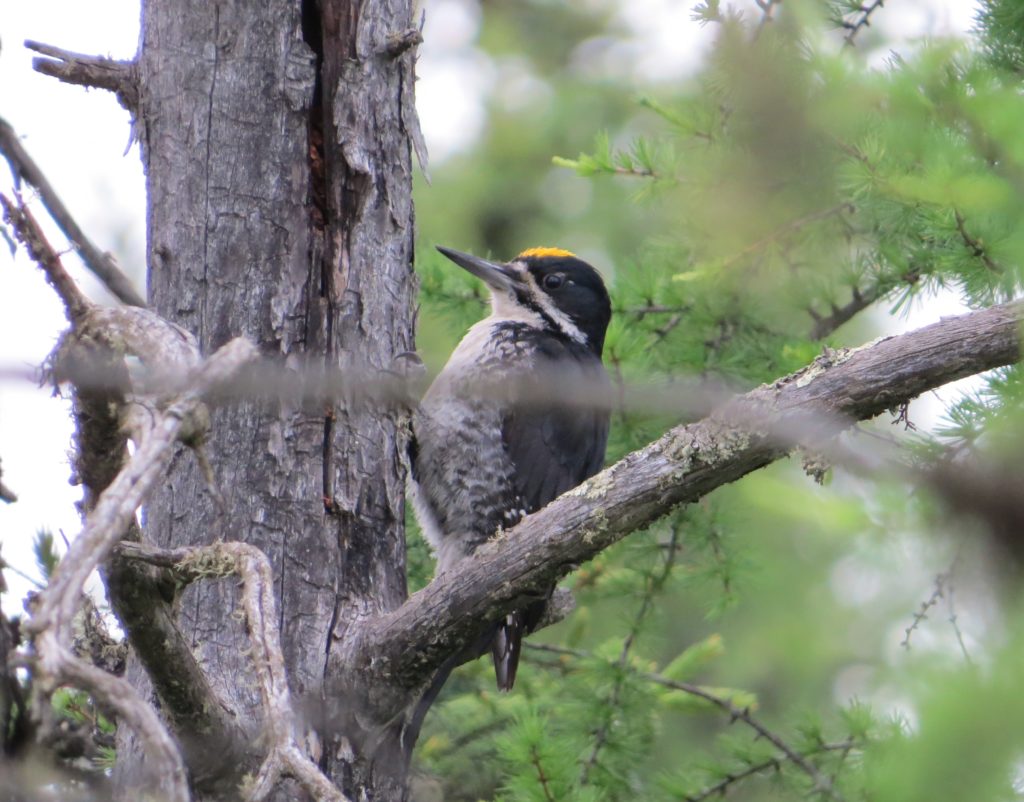
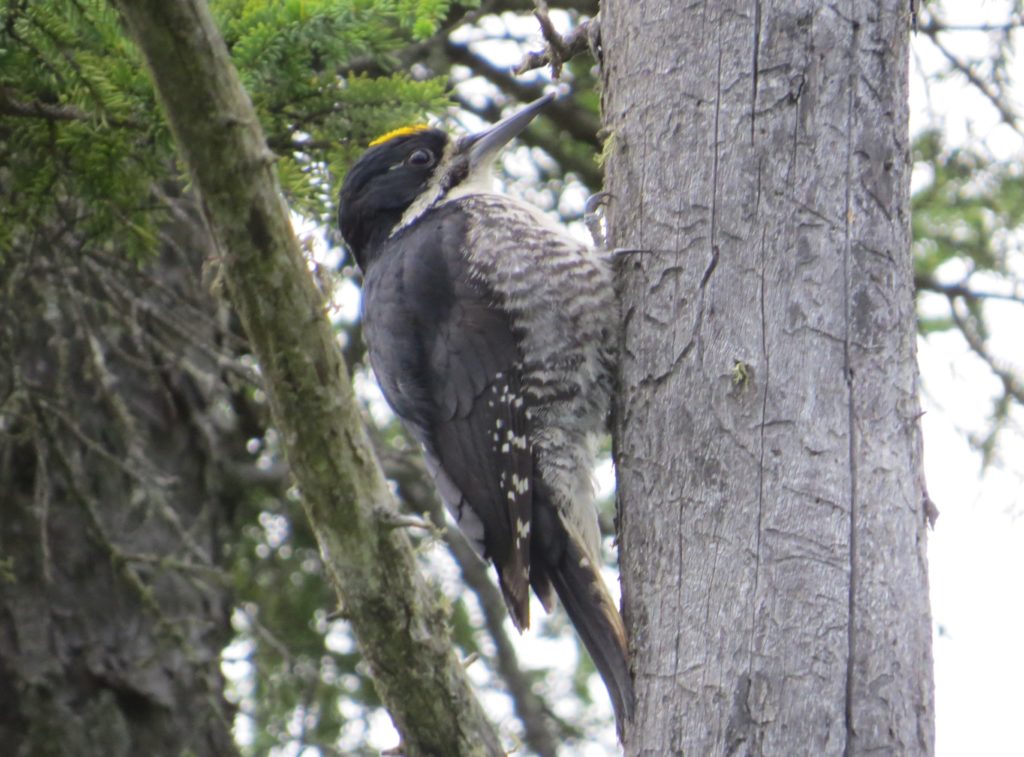 Here you can see and hear that distinctive drumming. It’s such a cool sound.
Here you can see and hear that distinctive drumming. It’s such a cool sound.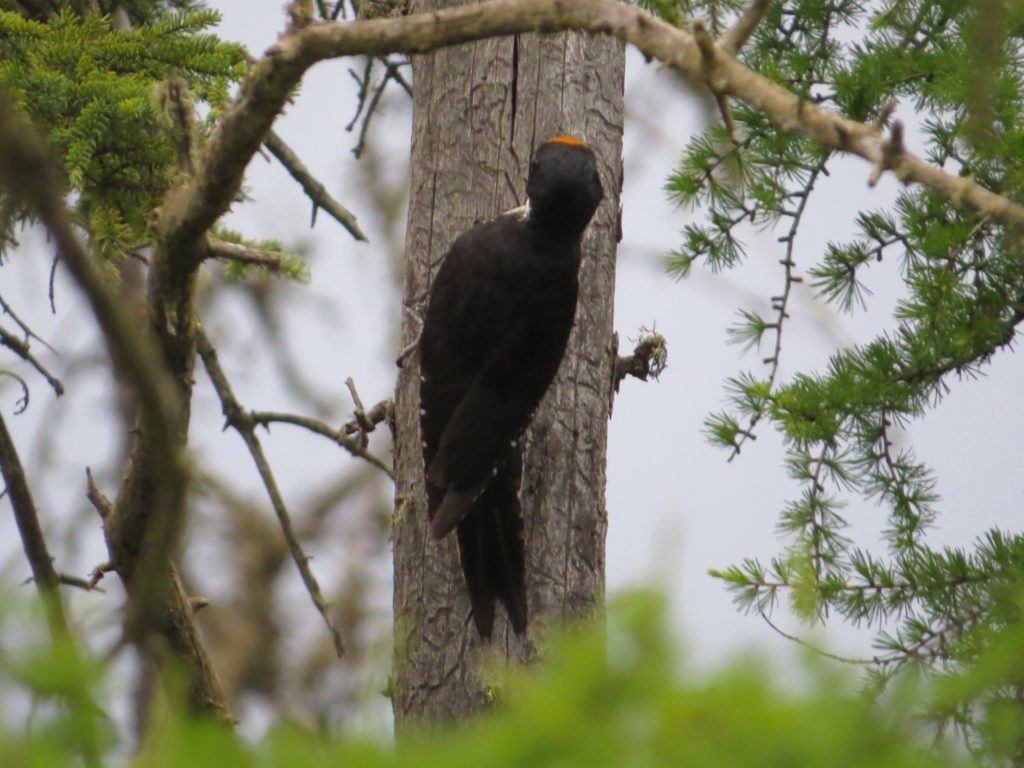
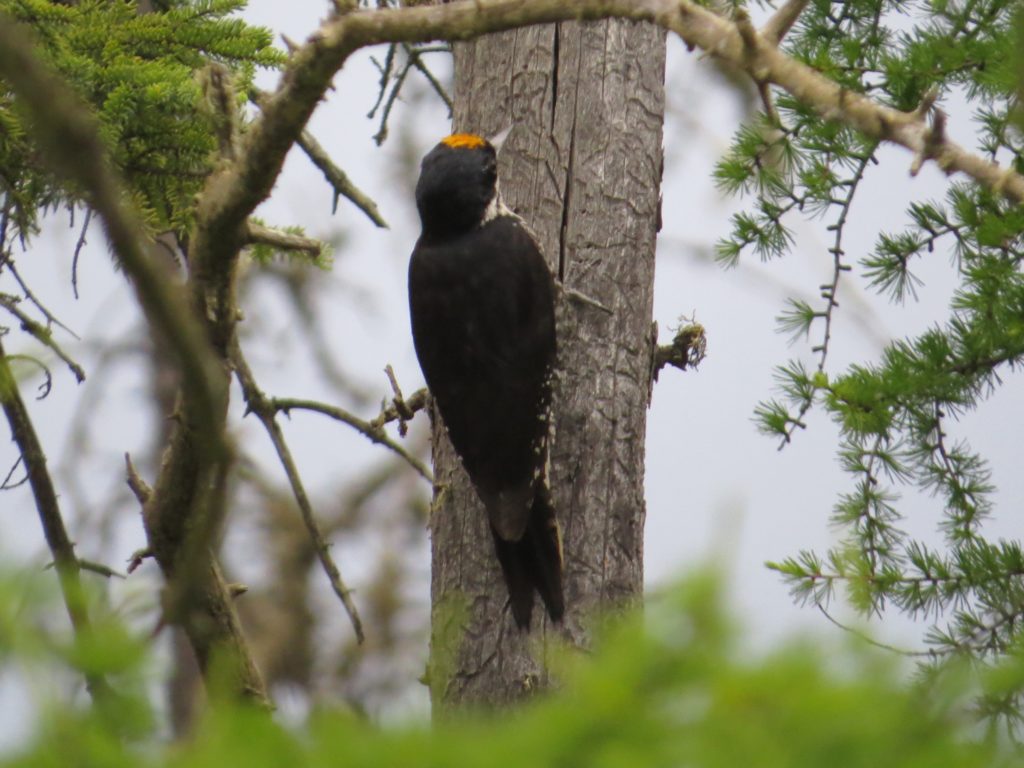
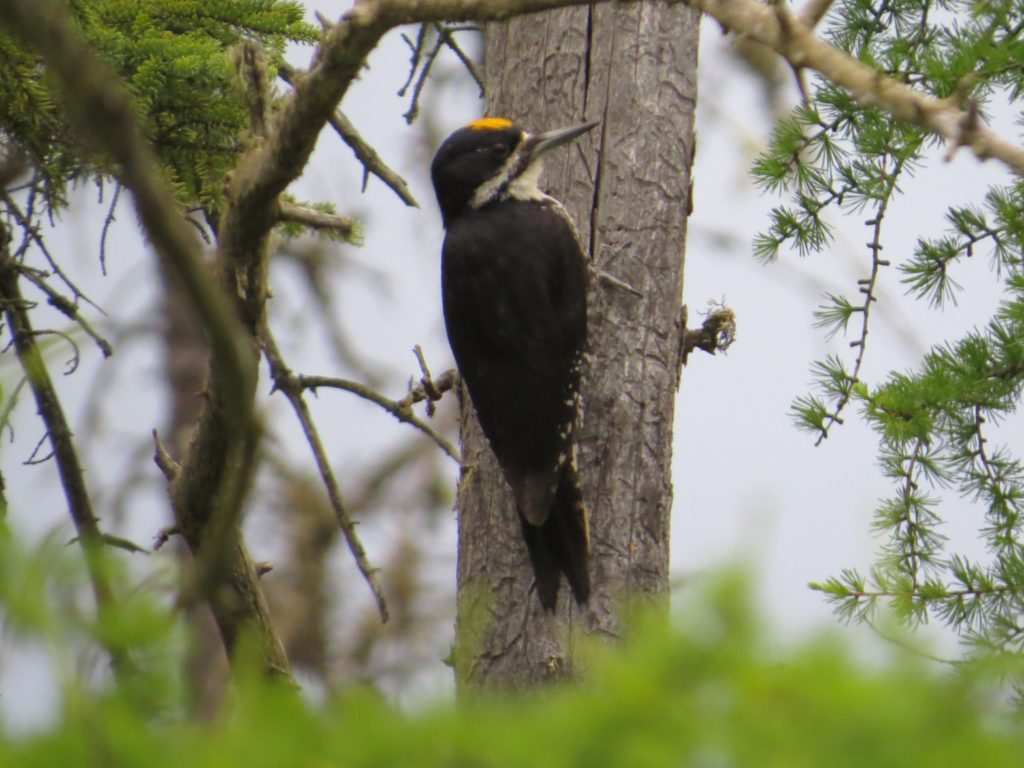
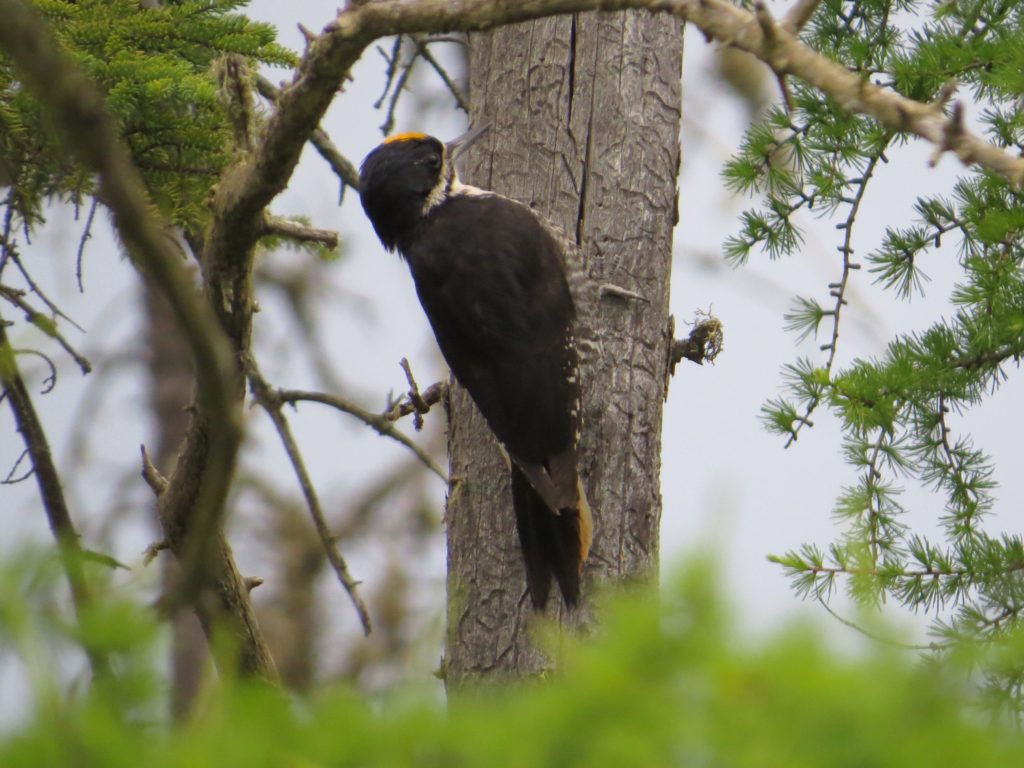
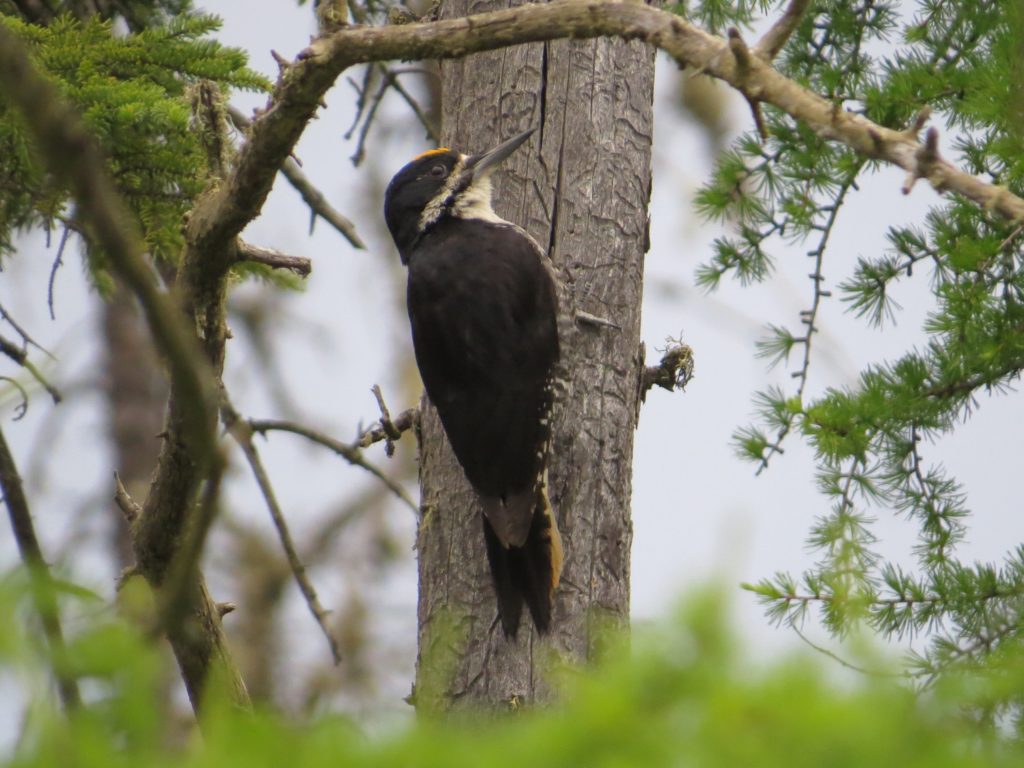 Here’s another video. I was hoping to capture him drumming some more, but instead caught him itching himself. Mosquito bite?
Here’s another video. I was hoping to capture him drumming some more, but instead caught him itching himself. Mosquito bite?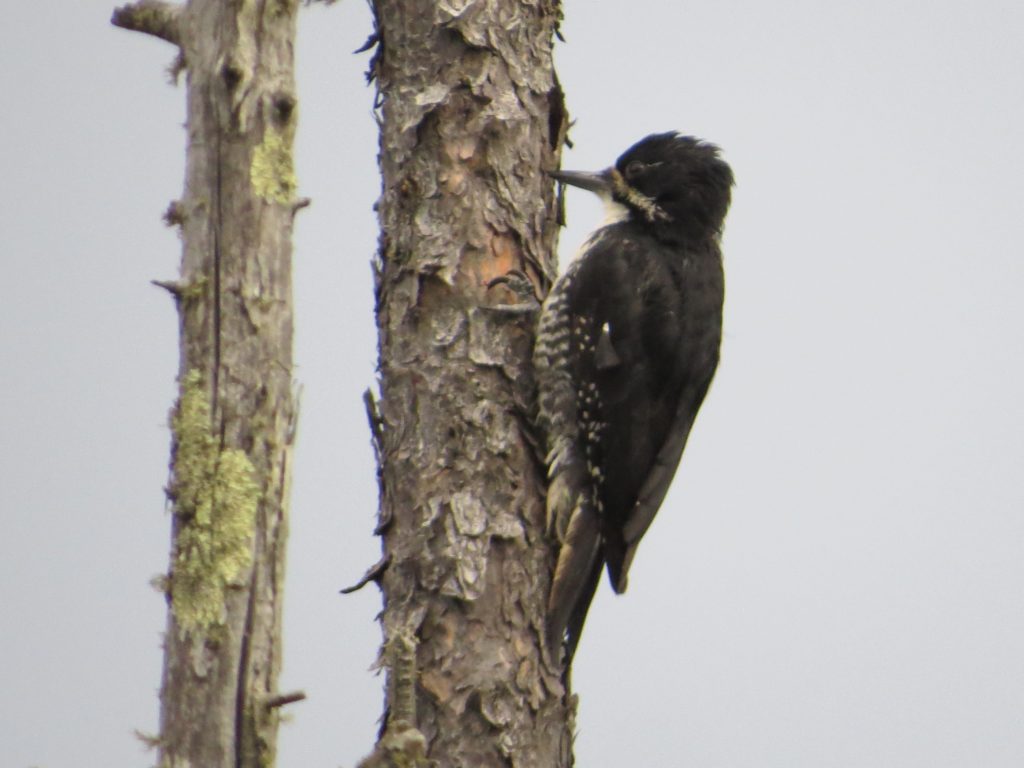 Thrilled with the bonus Woodpecker, I continued my waterlogged hike back to the car. Then I again heard a Black-backed Woodpecker a couple hundred yards from the first two, and then I saw one of them following the other around. I thought they must be those two that I saw earlier. I glassed the two birds as one followed the other up a Spruce and was shocked to see that both were males–an adult being followed by this juvenile!
Thrilled with the bonus Woodpecker, I continued my waterlogged hike back to the car. Then I again heard a Black-backed Woodpecker a couple hundred yards from the first two, and then I saw one of them following the other around. I thought they must be those two that I saw earlier. I glassed the two birds as one followed the other up a Spruce and was shocked to see that both were males–an adult being followed by this juvenile!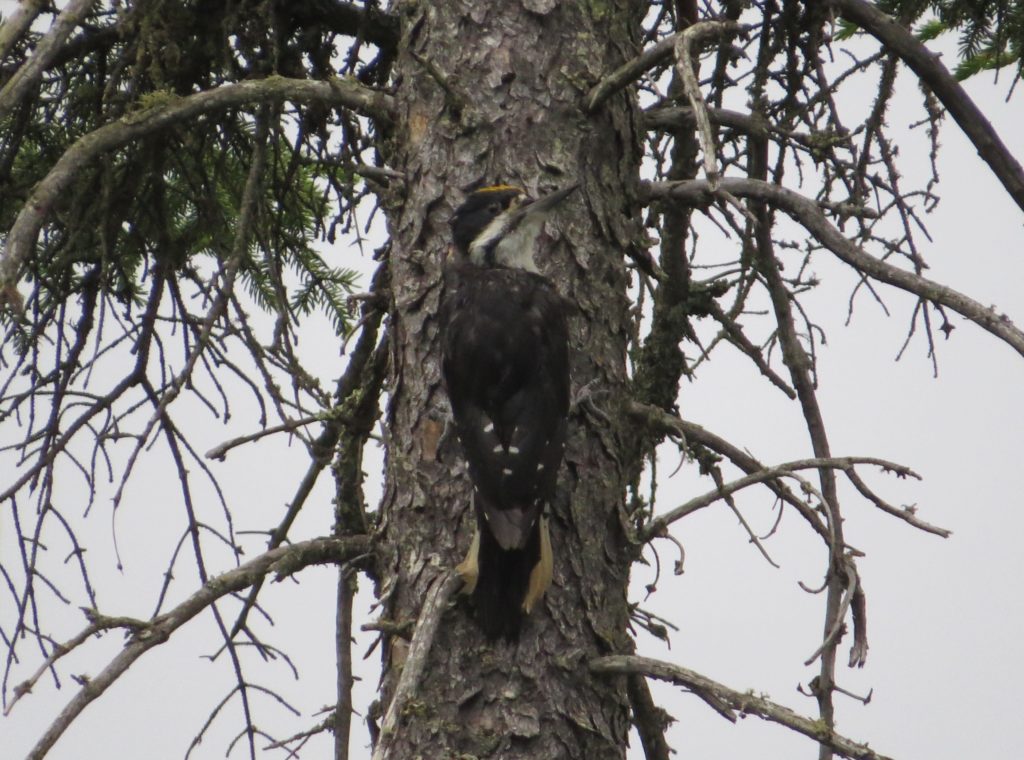
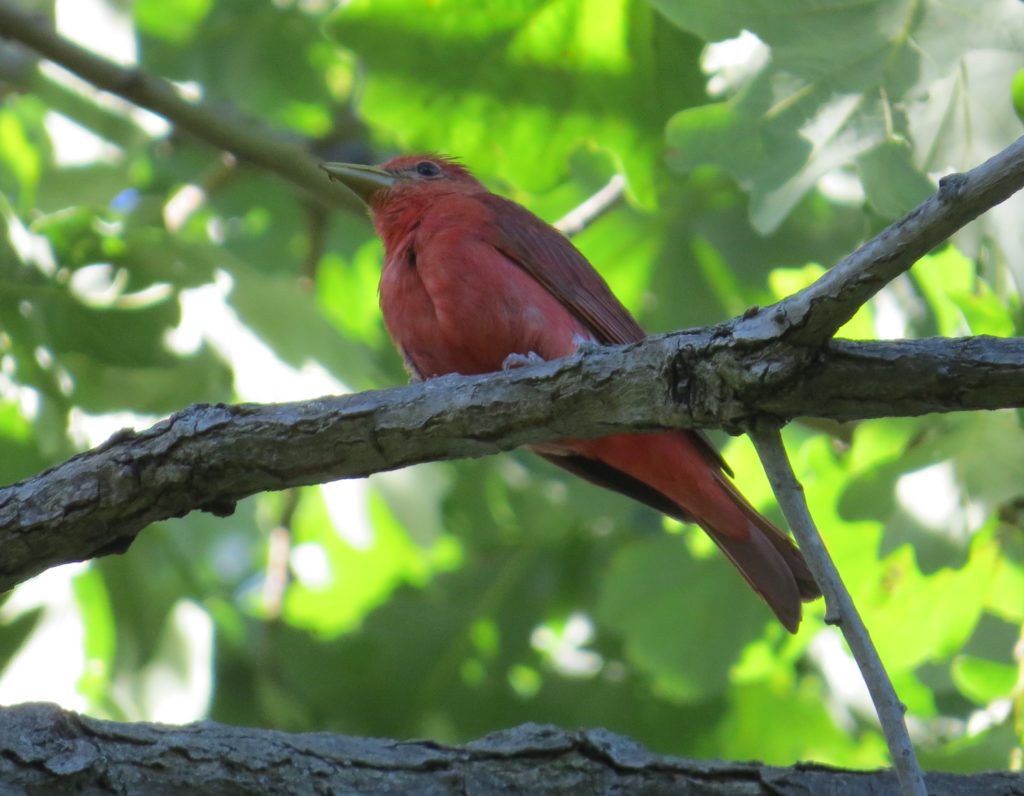 One of the most popular birds in Minnesota this summer has been the Summer Tanager discovered by Wilmer Fernandez at the University of Minnesota’s Landscape Arboretum in Chanhassen. Summer Tanager is rare-regular in the state, but the fact that this bachelor bird was in the Twin Cities and singing endlessly on territory made it all the rage for the better part of a week. Not even the Arboretum’s steep per person entry fee could keep birders away, including yours truly.
One of the most popular birds in Minnesota this summer has been the Summer Tanager discovered by Wilmer Fernandez at the University of Minnesota’s Landscape Arboretum in Chanhassen. Summer Tanager is rare-regular in the state, but the fact that this bachelor bird was in the Twin Cities and singing endlessly on territory made it all the rage for the better part of a week. Not even the Arboretum’s steep per person entry fee could keep birders away, including yours truly.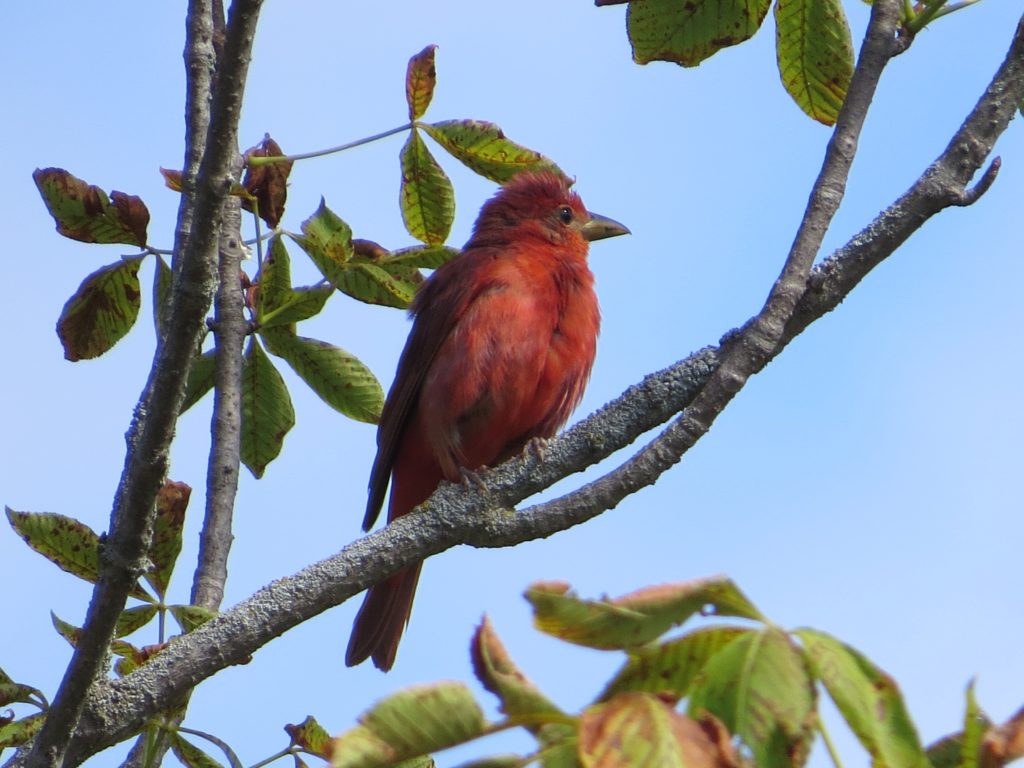 If you’ve been following ABWCH this past spring, you may recall that I already made a Summer Tanager chase to get my lifer. So why did I go after another if I’m not a county lister? Two reasons: this bird was solid red, unlike that tye-died creature I saw earlier this year, and this bird was singing on territory. I wanted the full SUTA experience. That quick migrant sighting didn’t fill the void. Plus this bird was relatively close to home, and I had the time off.
If you’ve been following ABWCH this past spring, you may recall that I already made a Summer Tanager chase to get my lifer. So why did I go after another if I’m not a county lister? Two reasons: this bird was solid red, unlike that tye-died creature I saw earlier this year, and this bird was singing on territory. I wanted the full SUTA experience. That quick migrant sighting didn’t fill the void. Plus this bird was relatively close to home, and I had the time off.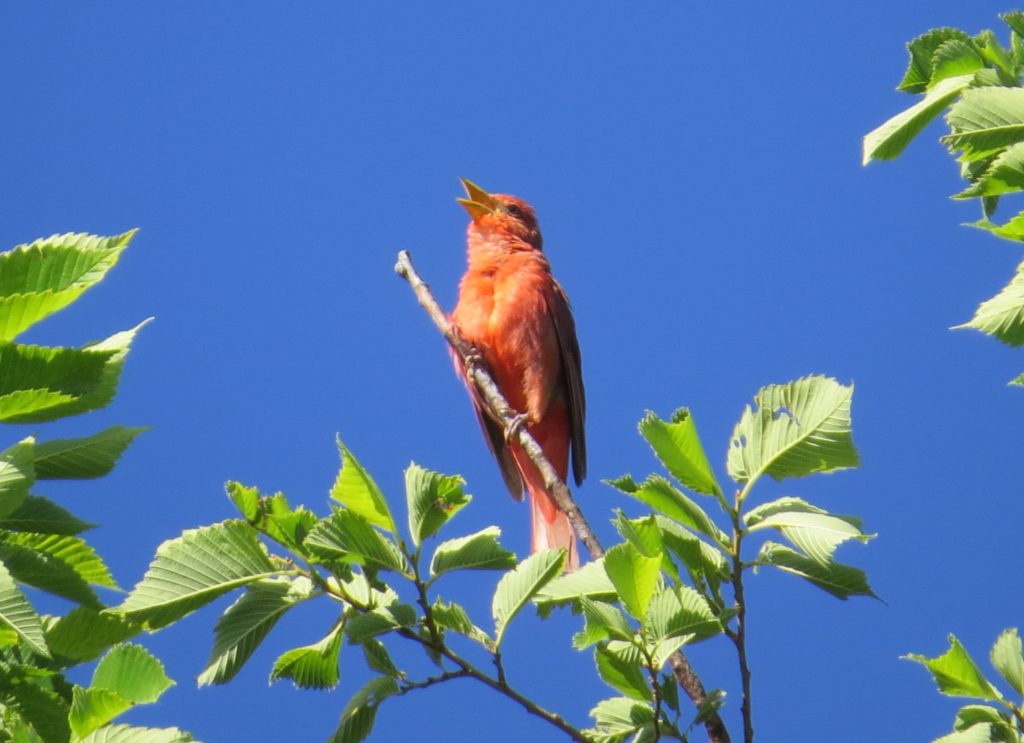 A couple of others who had the time off were teaching colleagues Brad Nelson and Theresa Nelson. The mother-son Nelson duo joined me on this little excursion. Our semi-annual birding get-togethers are always productive and fun–the last time the three of us met up was over a Snowy Owl near one of the towns in our district. Just like we had no problem getting that Owl, seeing this Tanager was a piece of cake. We could hear it singing immediately once we got out of the car at the nut trees section of the Arboretum where it apparently has set up shop for the season. We spent the better part of an hour following it around as it sang endlessly from its various perches, not even stopping its song while it feasted on insects:
A couple of others who had the time off were teaching colleagues Brad Nelson and Theresa Nelson. The mother-son Nelson duo joined me on this little excursion. Our semi-annual birding get-togethers are always productive and fun–the last time the three of us met up was over a Snowy Owl near one of the towns in our district. Just like we had no problem getting that Owl, seeing this Tanager was a piece of cake. We could hear it singing immediately once we got out of the car at the nut trees section of the Arboretum where it apparently has set up shop for the season. We spent the better part of an hour following it around as it sang endlessly from its various perches, not even stopping its song while it feasted on insects: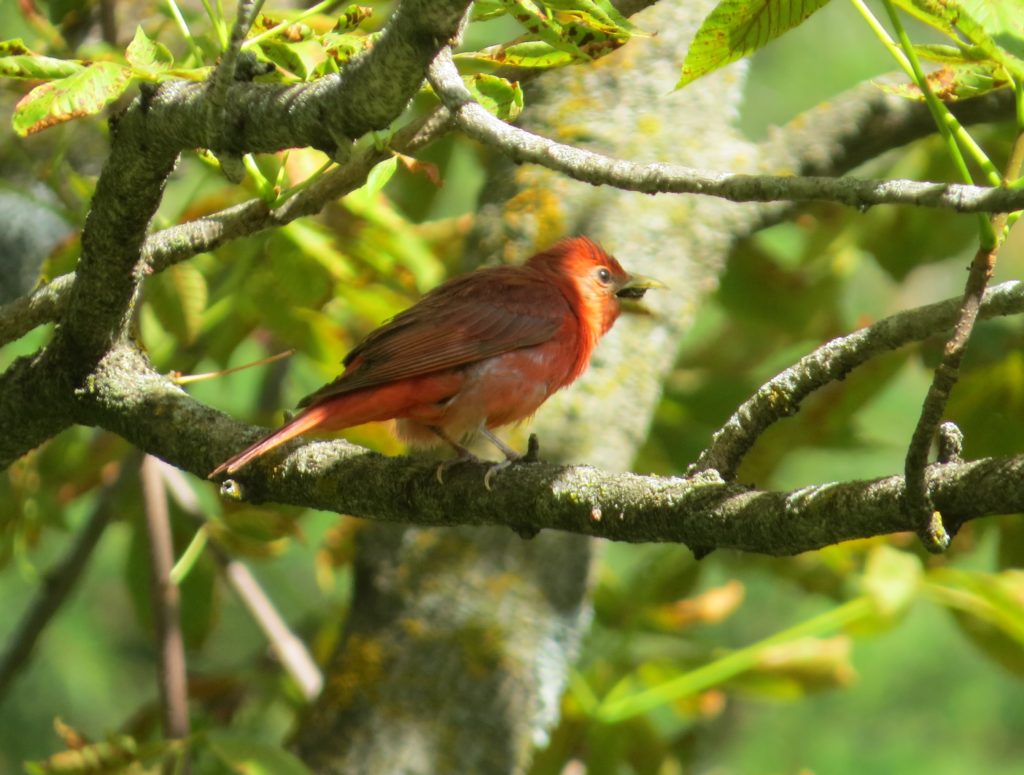
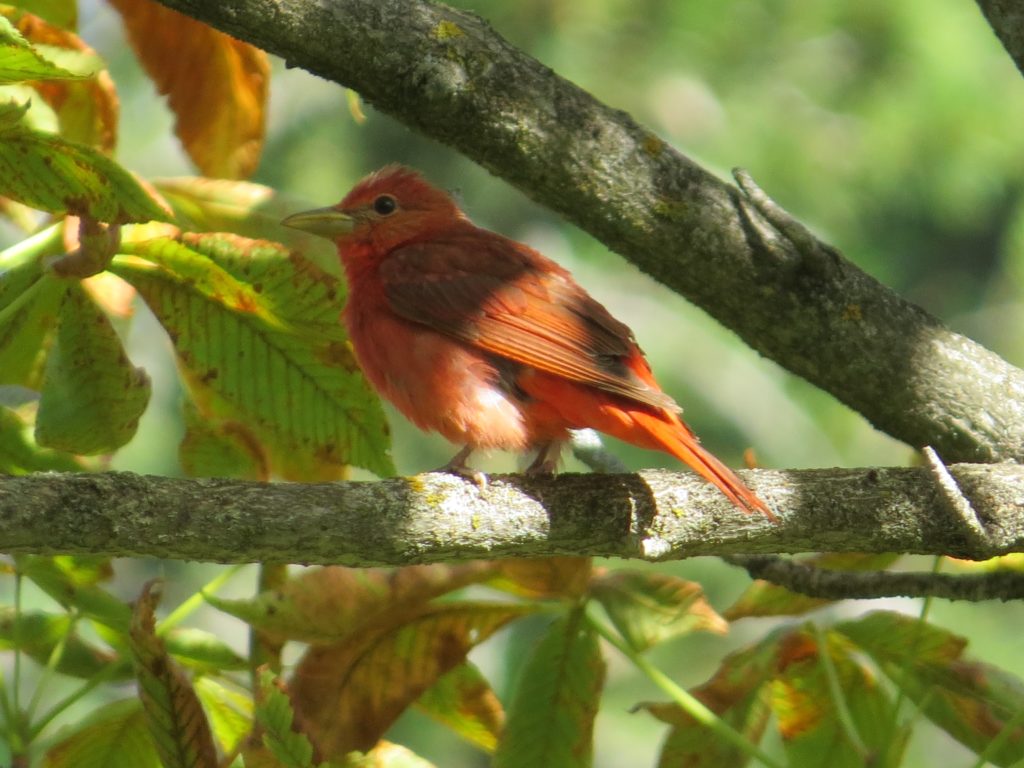 It’s been the year of the Tanager here in MN. To close out this post, here’s a pic of each of the two rare-regular Tanagers and a brand new Scarlet Tanager all seen in state this year. Sorry for turning the Scarlet into a trash bird on this blog. No, I’m not–they are still an exciting bird and this post celebrates all things Tanager.
It’s been the year of the Tanager here in MN. To close out this post, here’s a pic of each of the two rare-regular Tanagers and a brand new Scarlet Tanager all seen in state this year. Sorry for turning the Scarlet into a trash bird on this blog. No, I’m not–they are still an exciting bird and this post celebrates all things Tanager.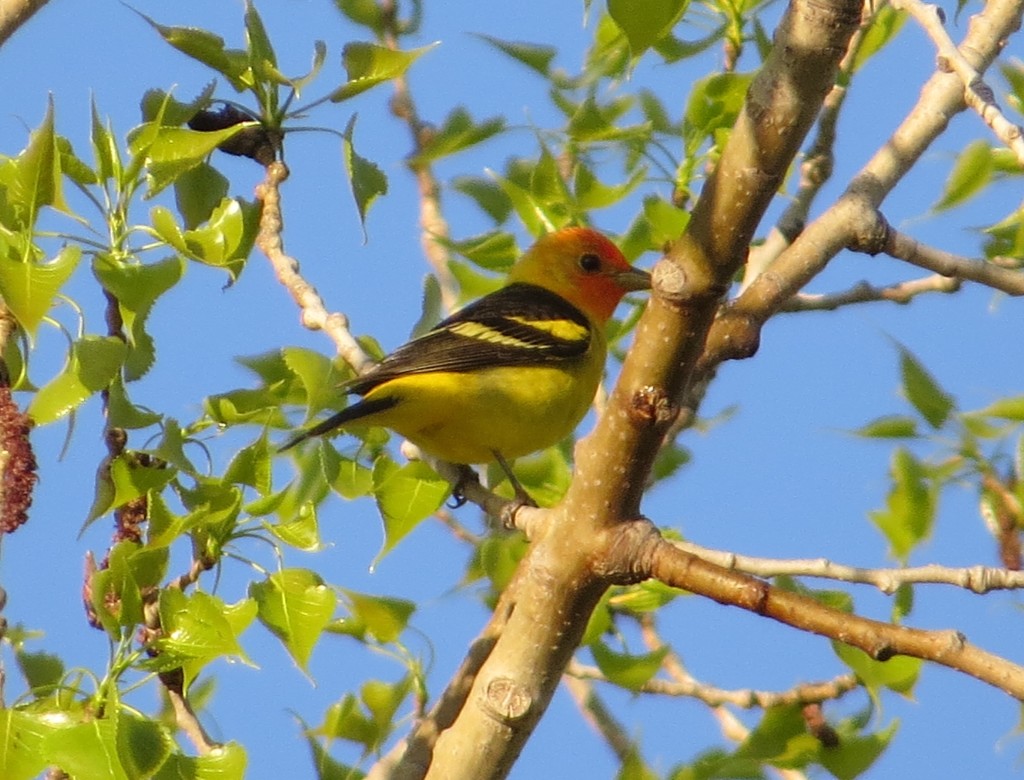
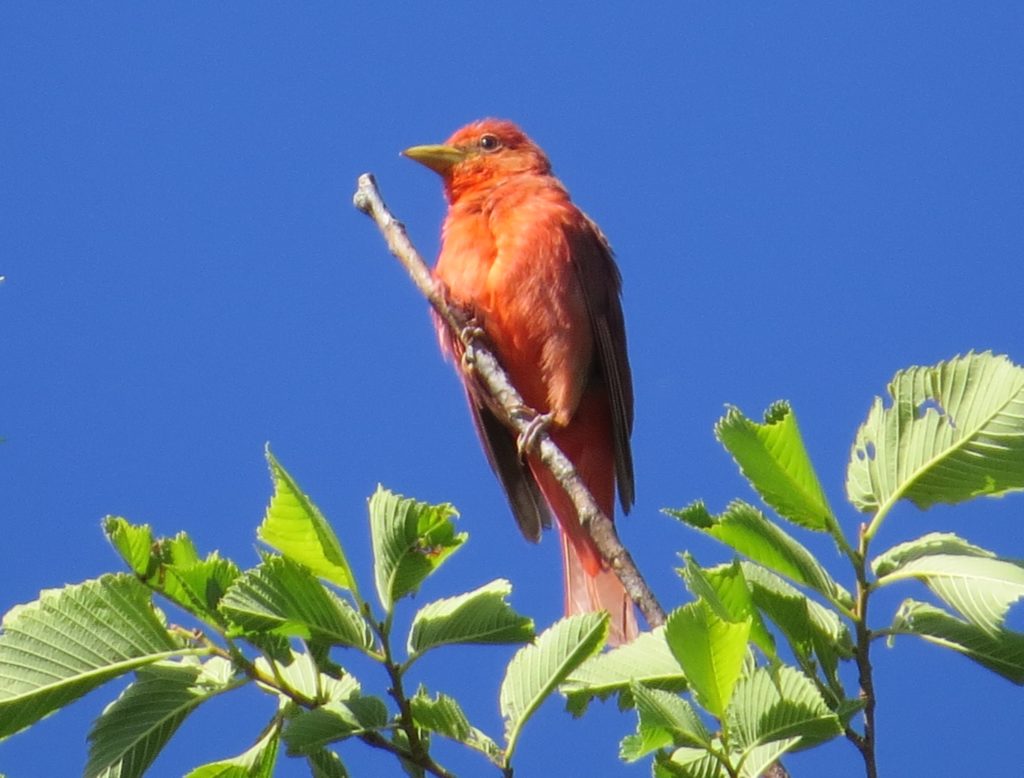
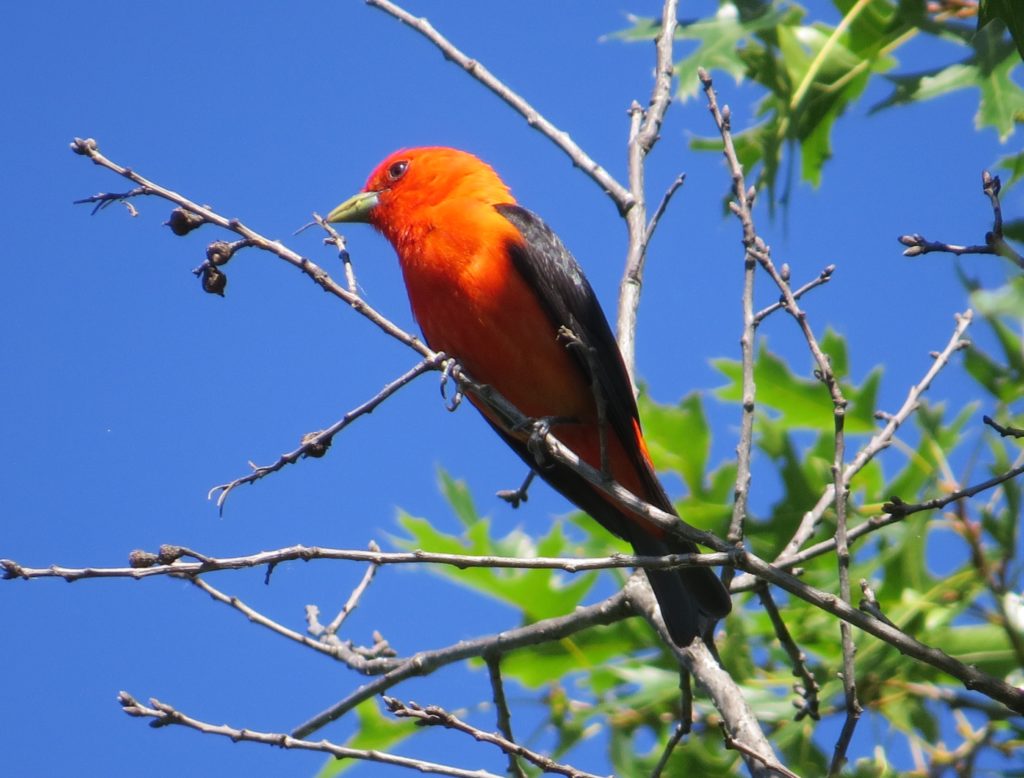
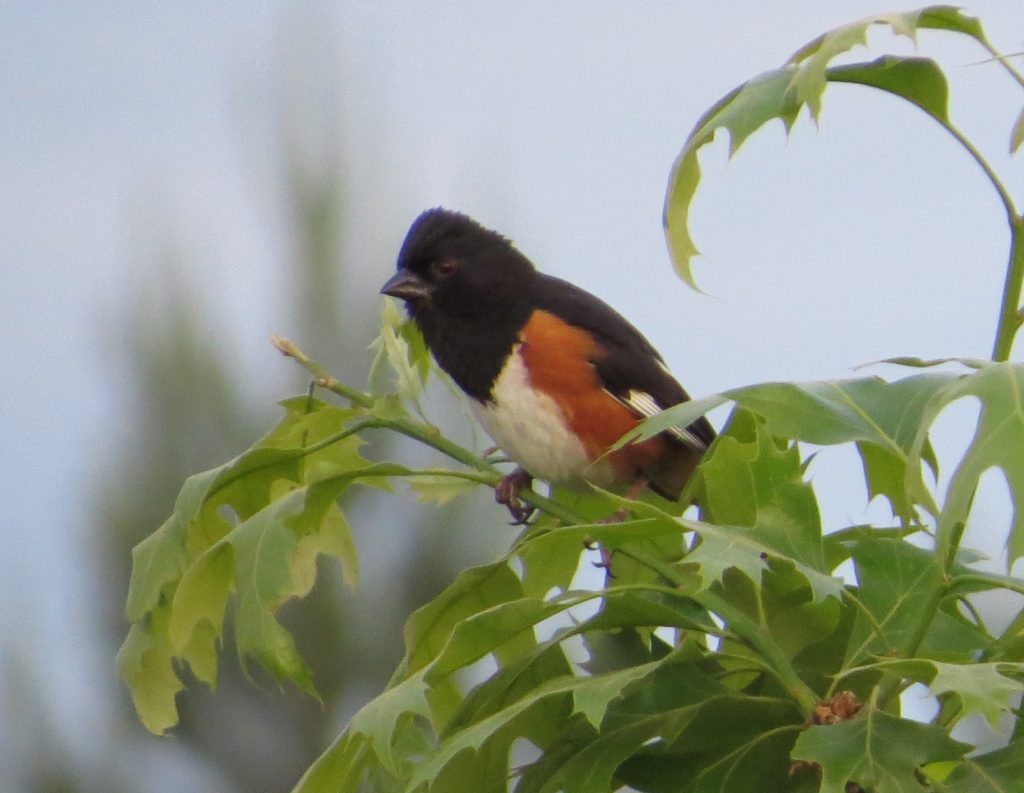
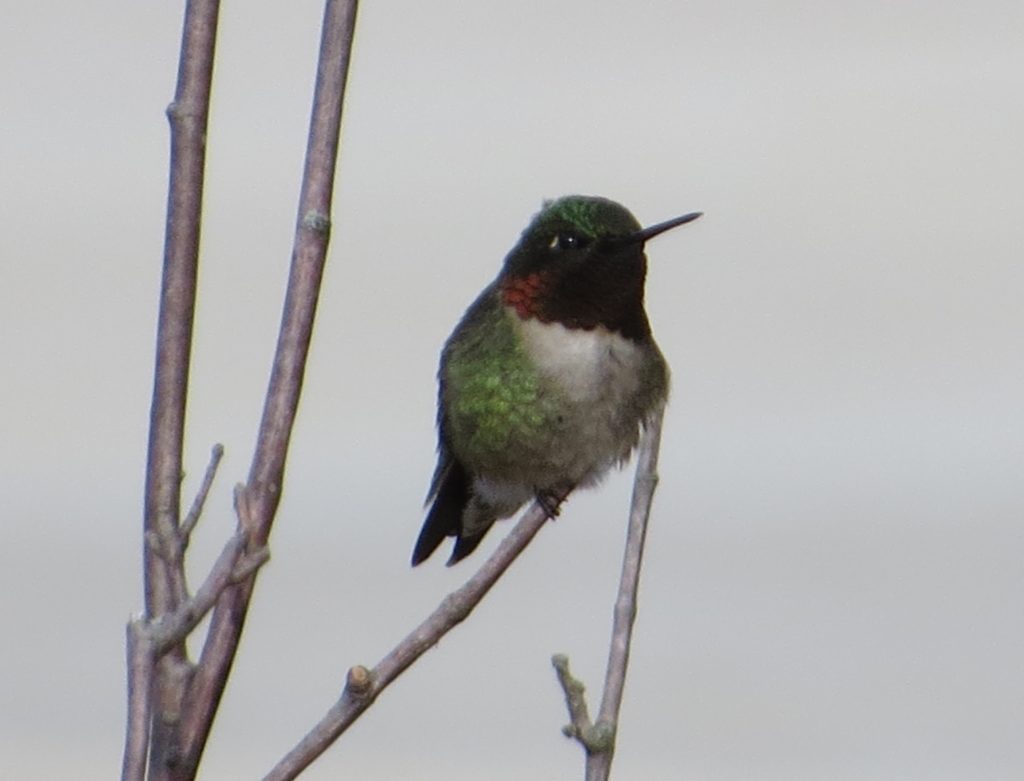
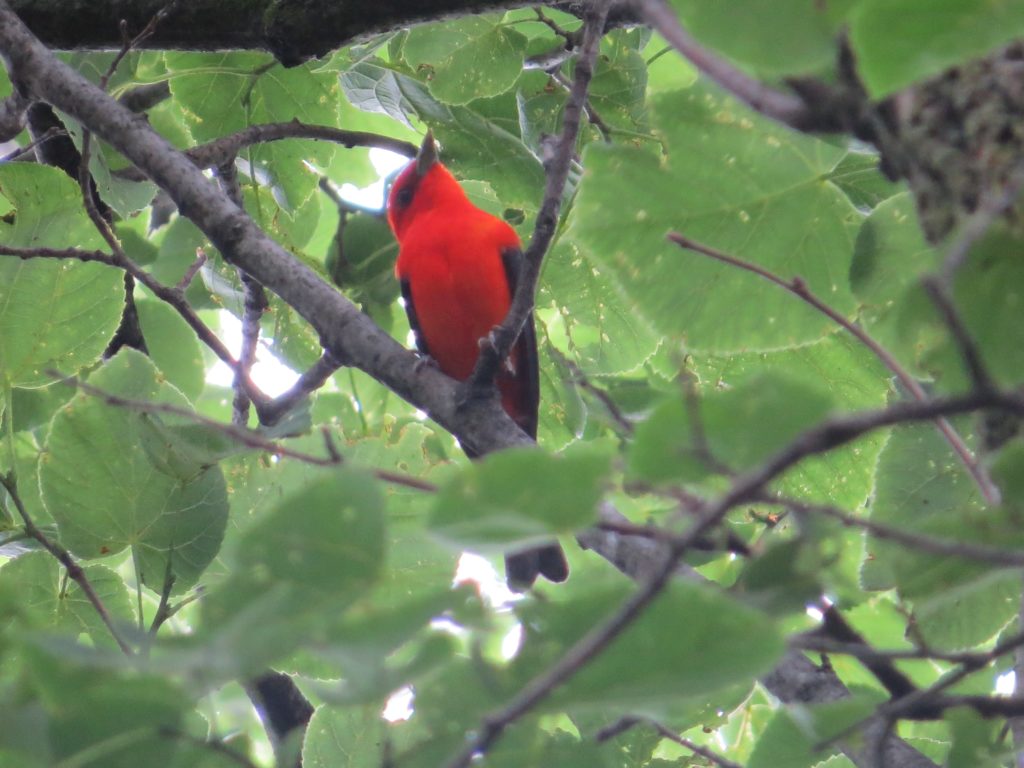 The other highlight was when Tommy picked out the sound of a calling Yellow-billed Cuckoo, a county bird for me! Once again, Tommy gives back! So in three successive days, this bird went from life bird to state bird to county bird. But it still was a no show. Someday.
The other highlight was when Tommy picked out the sound of a calling Yellow-billed Cuckoo, a county bird for me! Once again, Tommy gives back! So in three successive days, this bird went from life bird to state bird to county bird. But it still was a no show. Someday.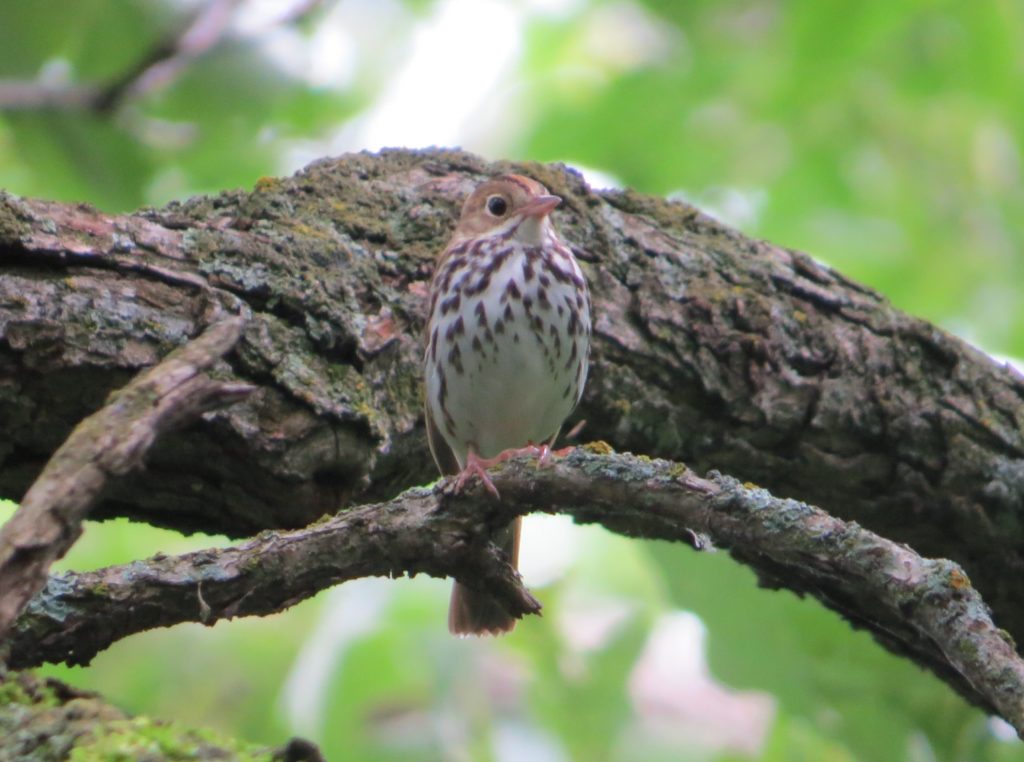
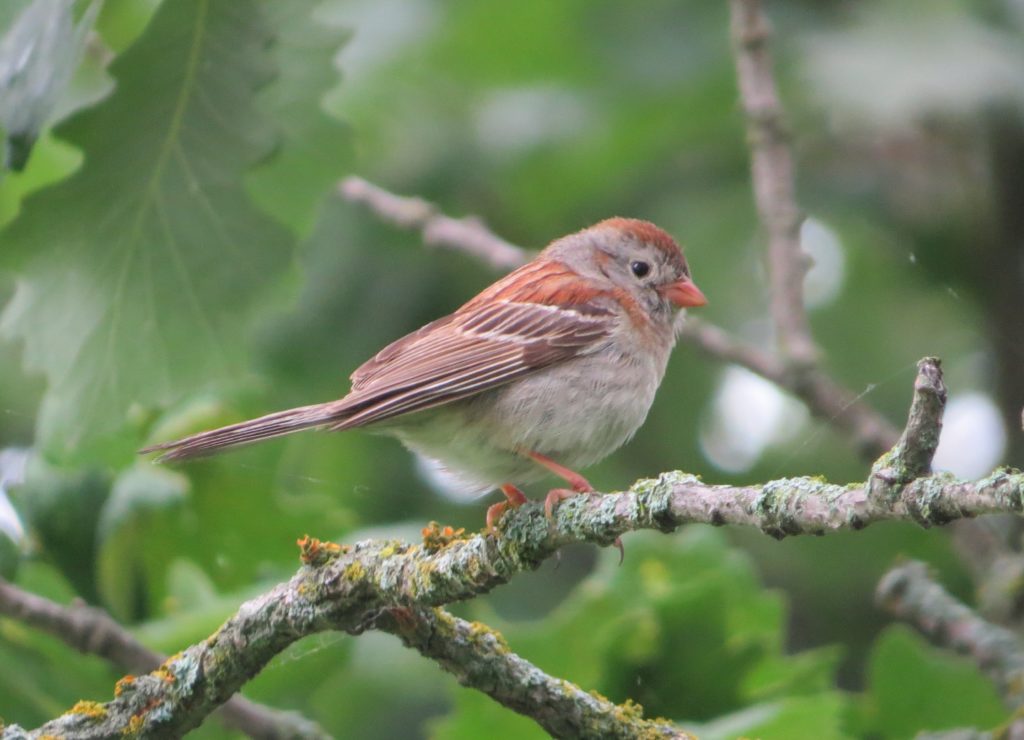
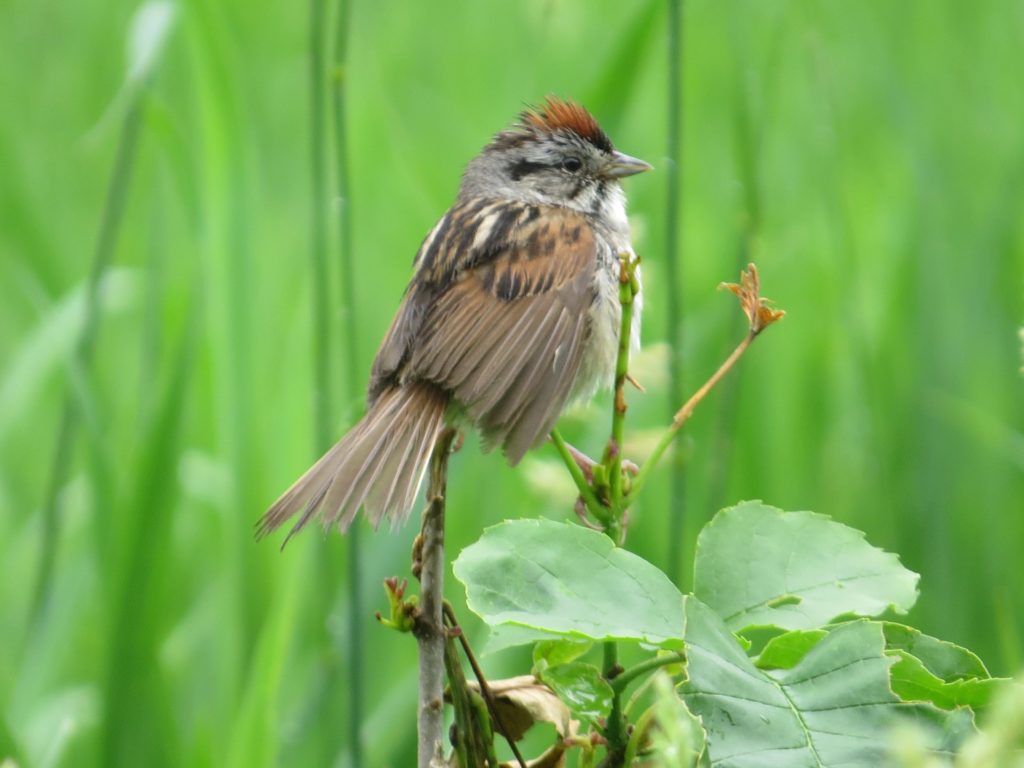
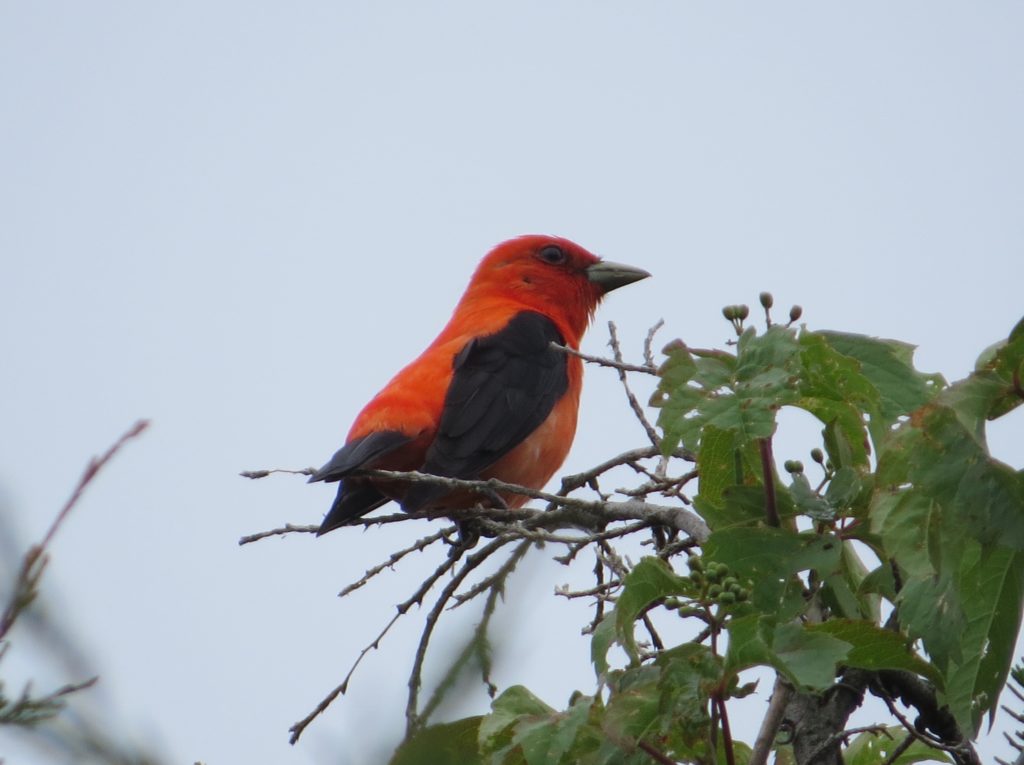 …and two Blue-winged Warblers, a very good bird for central Minnesota.
…and two Blue-winged Warblers, a very good bird for central Minnesota.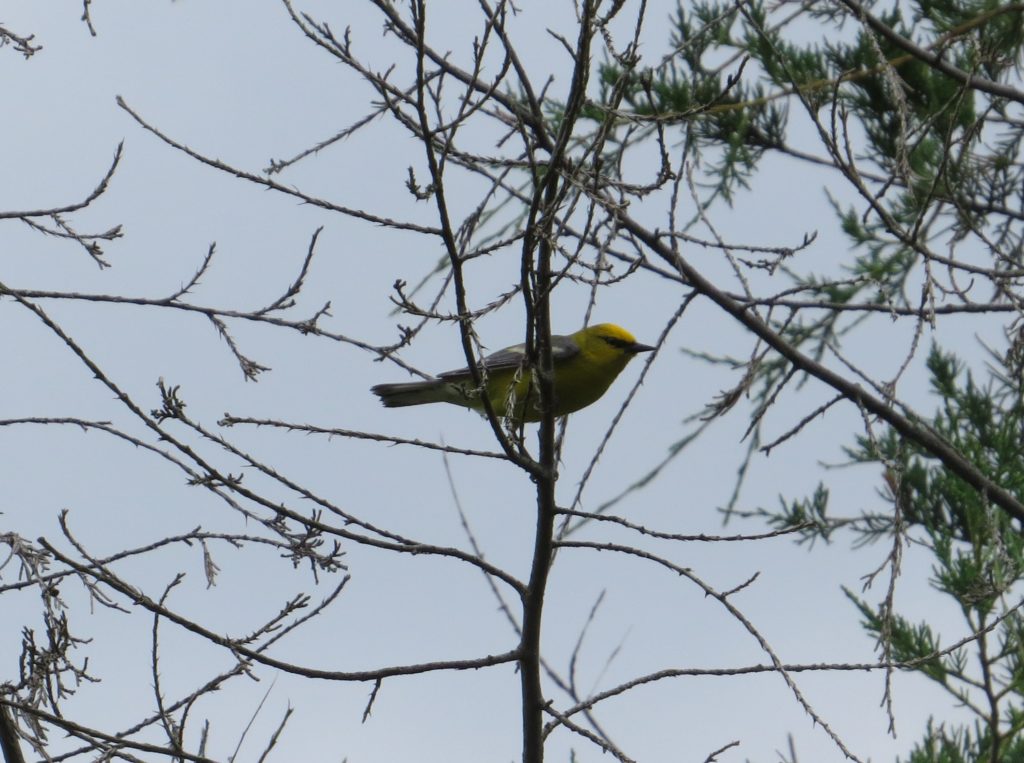
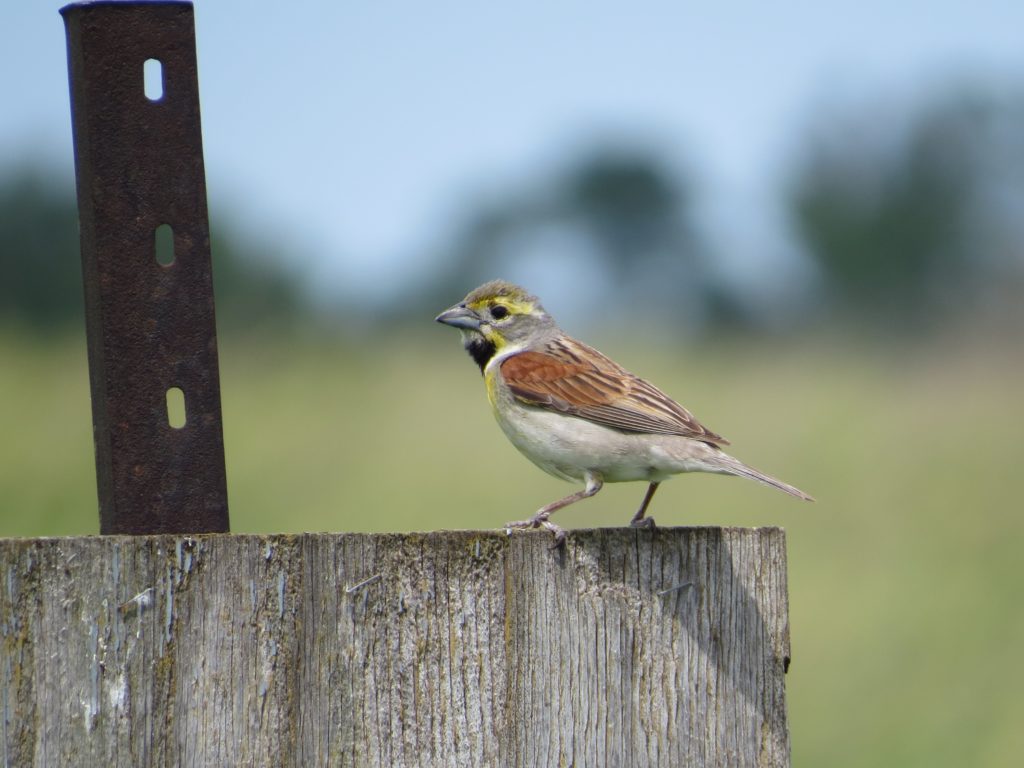 Another fun find I had one evening when I went out to a local wildlife management area was a completely unexpected county Least Bittern. Though I had a killer look at one flying toward me, I wasn’t able to get any photos but did record two Least Bitterns giving their “chuckling” call. You may have to turn up the volume.
Another fun find I had one evening when I went out to a local wildlife management area was a completely unexpected county Least Bittern. Though I had a killer look at one flying toward me, I wasn’t able to get any photos but did record two Least Bitterns giving their “chuckling” call. You may have to turn up the volume.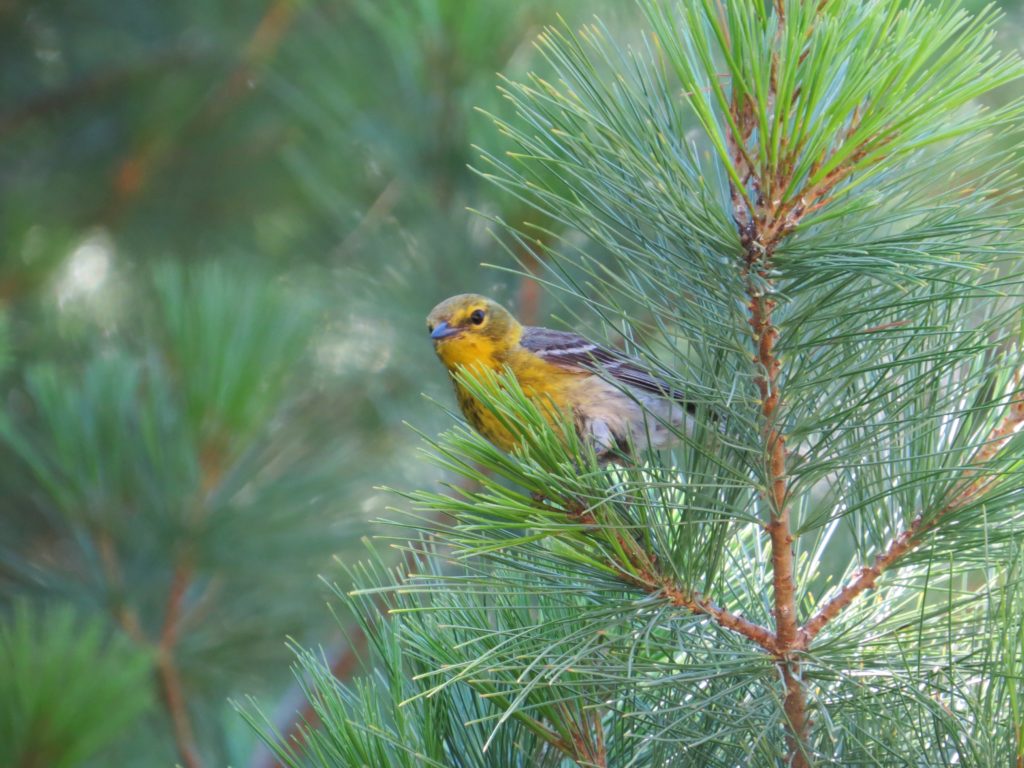
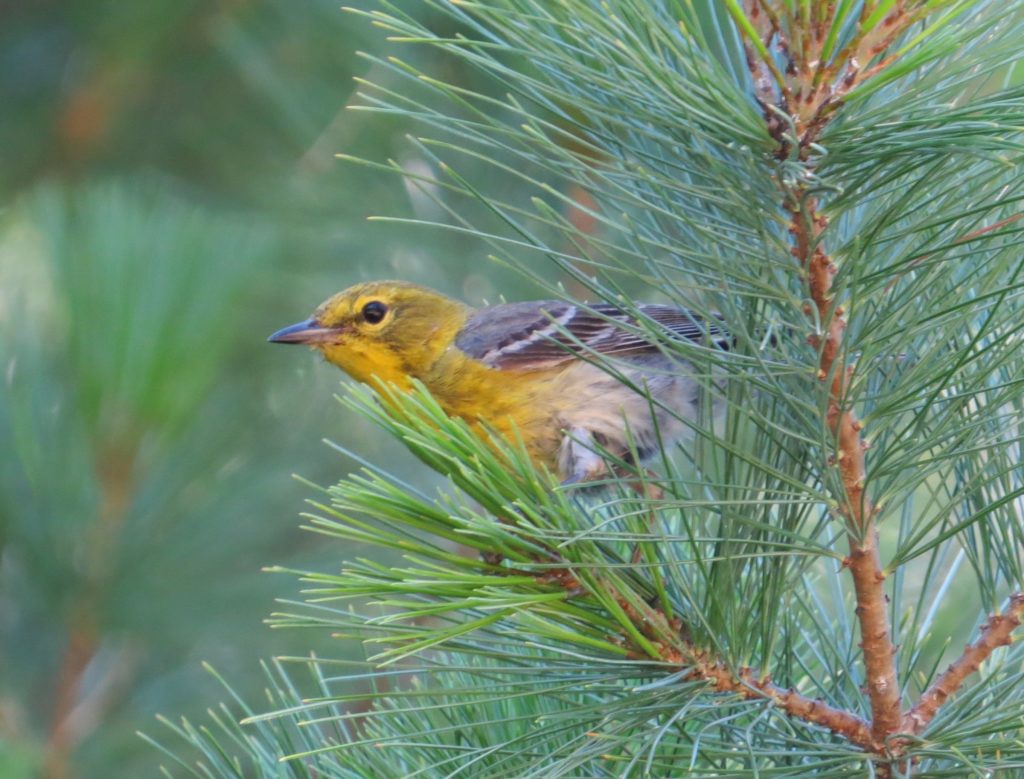
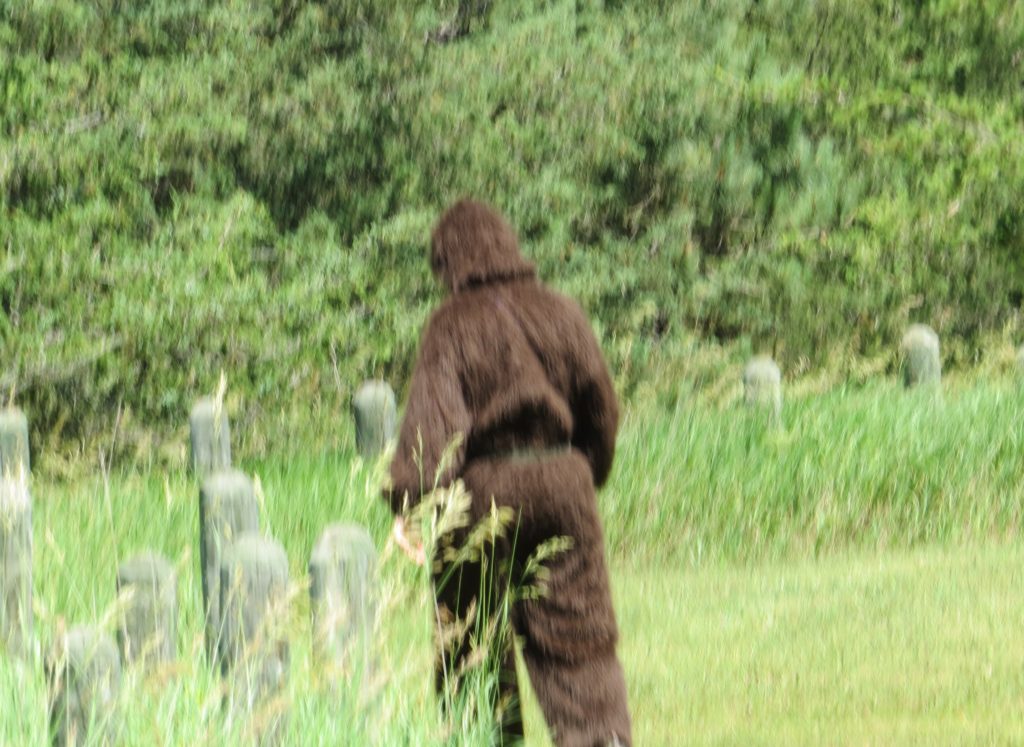
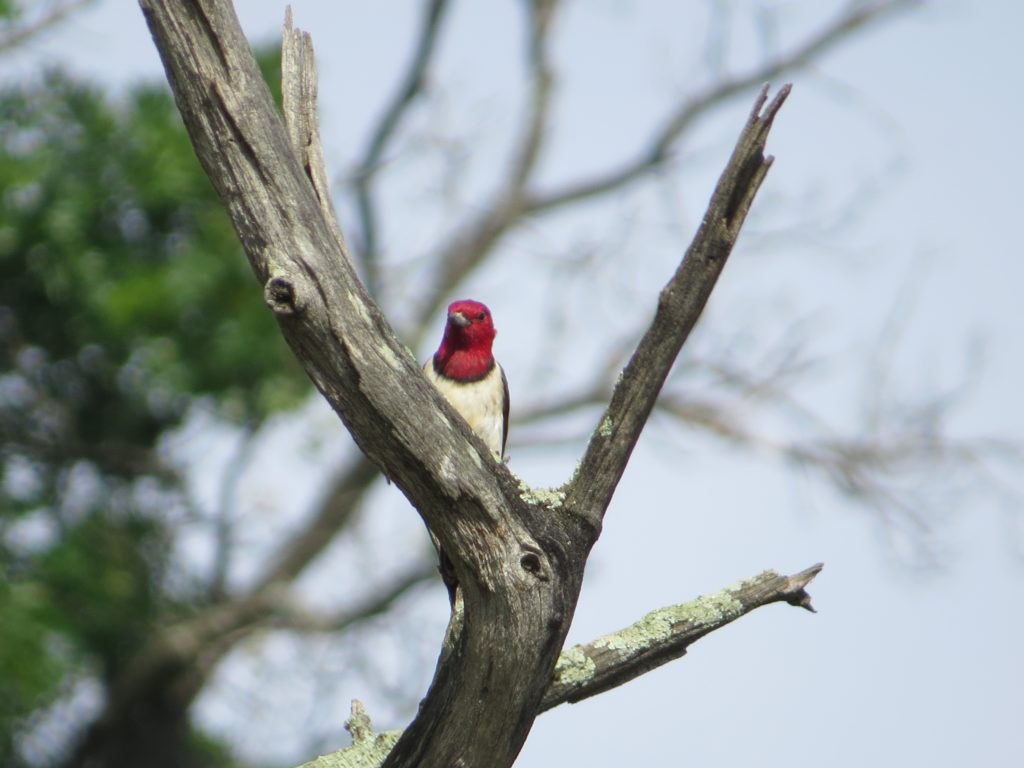
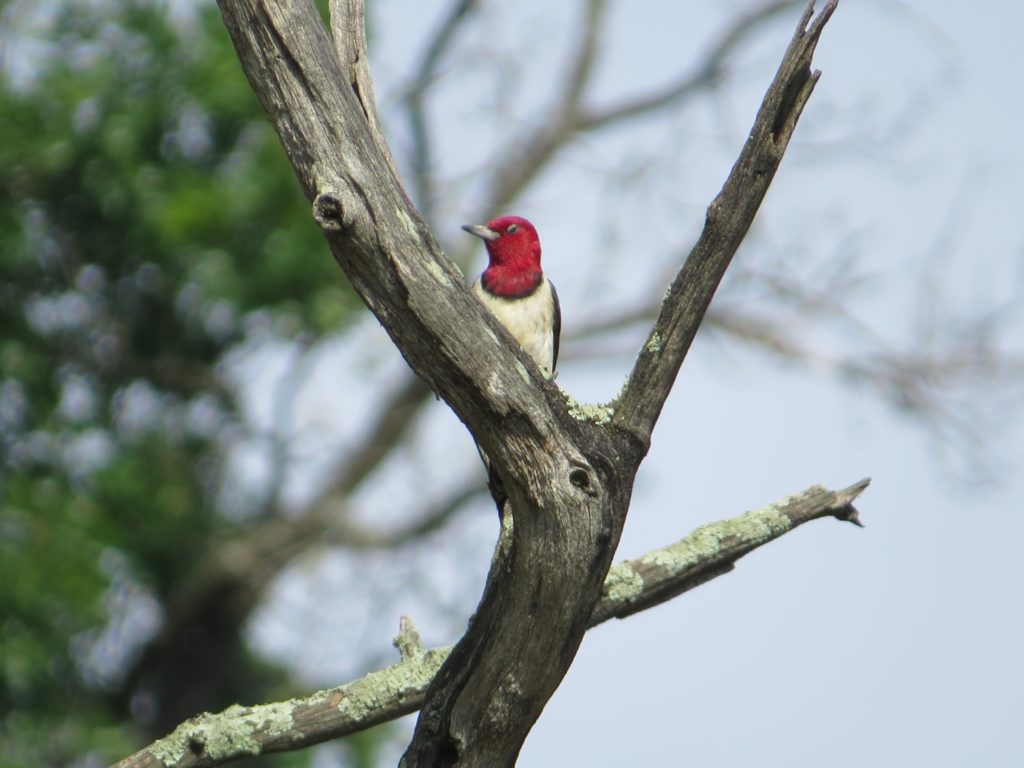 What’s this bird looking at? Probably a mate or a competitor for a mate. There were two that were involved in a seemingly endless chase, never once pausing for a good picture. At one point we saw them lock feet and fall to the ground like Eagles. It was fantastic.
What’s this bird looking at? Probably a mate or a competitor for a mate. There were two that were involved in a seemingly endless chase, never once pausing for a good picture. At one point we saw them lock feet and fall to the ground like Eagles. It was fantastic.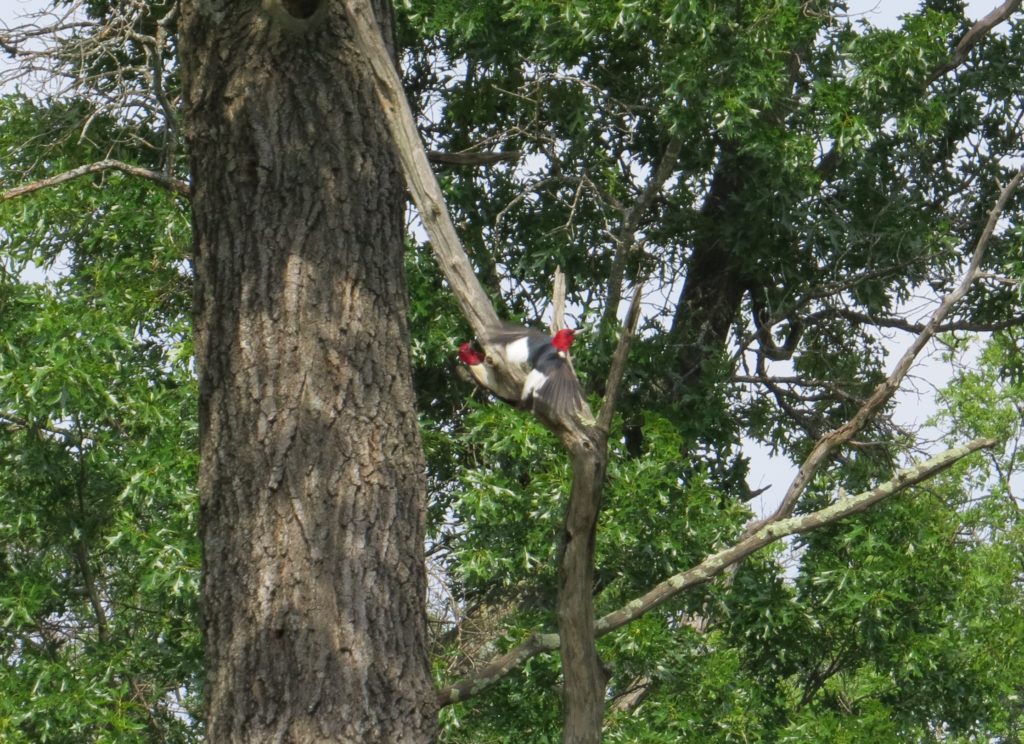 My own personal RHWO drought along with the near-threatened status of this bird made seeing this abundance of Red-headed Woodpeckers extremely thrilling. Never mind that this Woodpecker is ridiculously striking in appearance, sporting a bold, simplistic color pattern.
My own personal RHWO drought along with the near-threatened status of this bird made seeing this abundance of Red-headed Woodpeckers extremely thrilling. Never mind that this Woodpecker is ridiculously striking in appearance, sporting a bold, simplistic color pattern.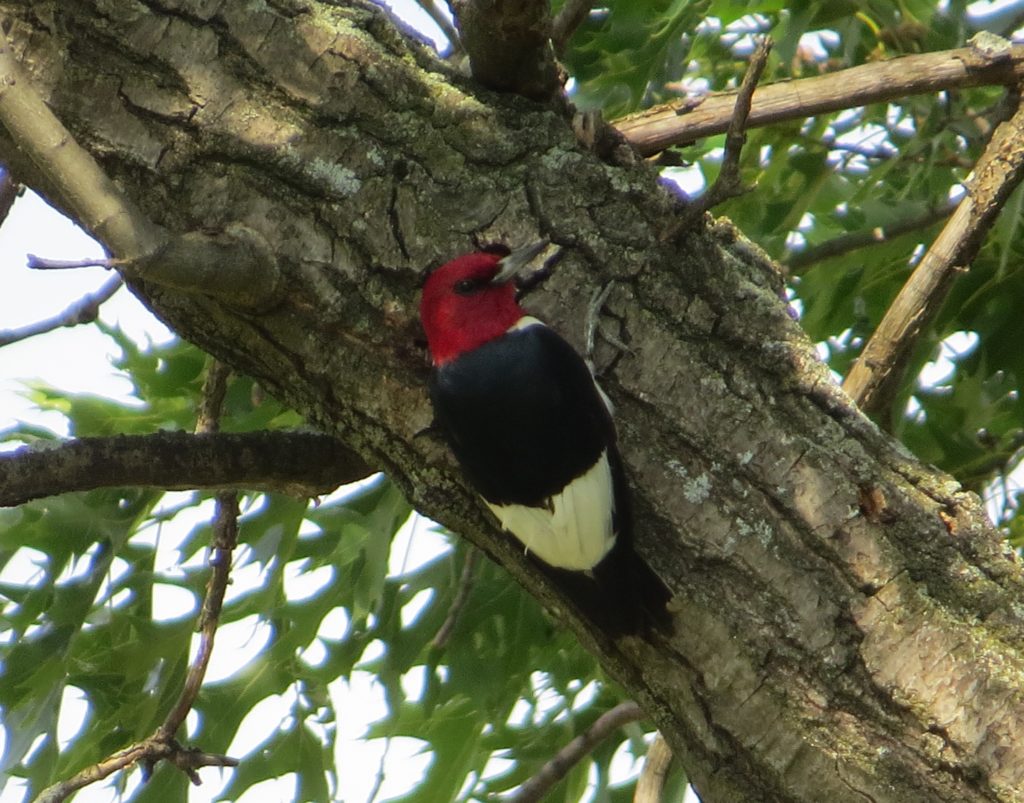
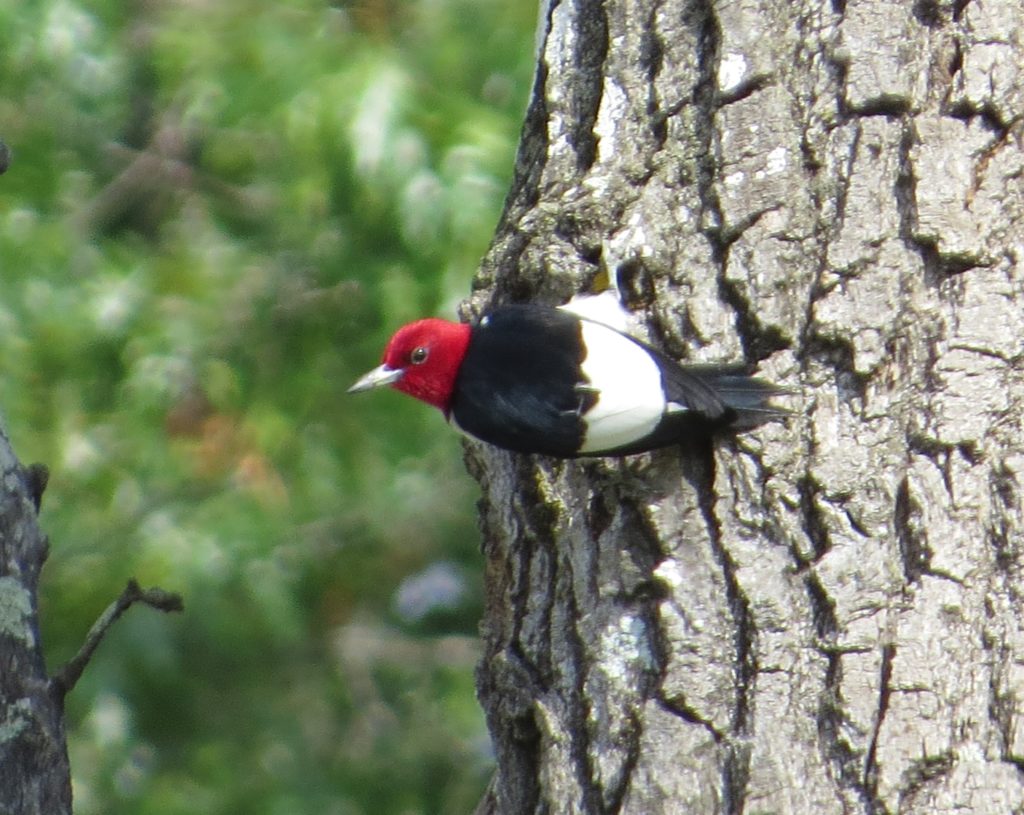 Evan enjoyed looking at all these cool Woodpeckers flying around us everywhere.
Evan enjoyed looking at all these cool Woodpeckers flying around us everywhere.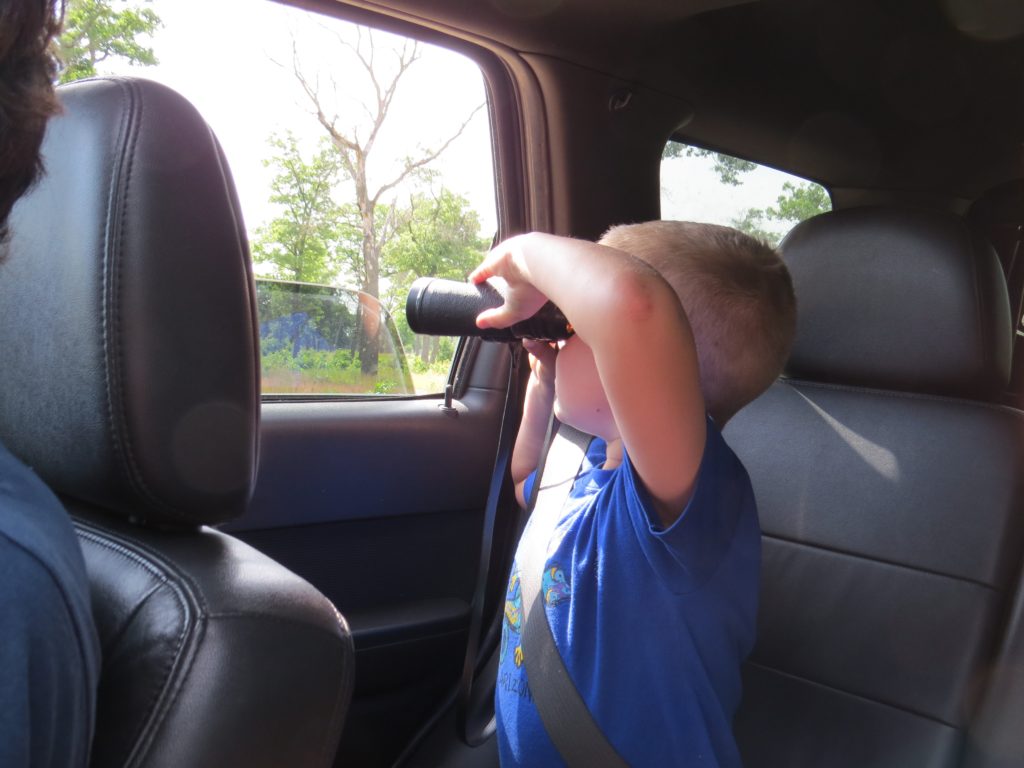 Then again, who wouldn’t?
Then again, who wouldn’t?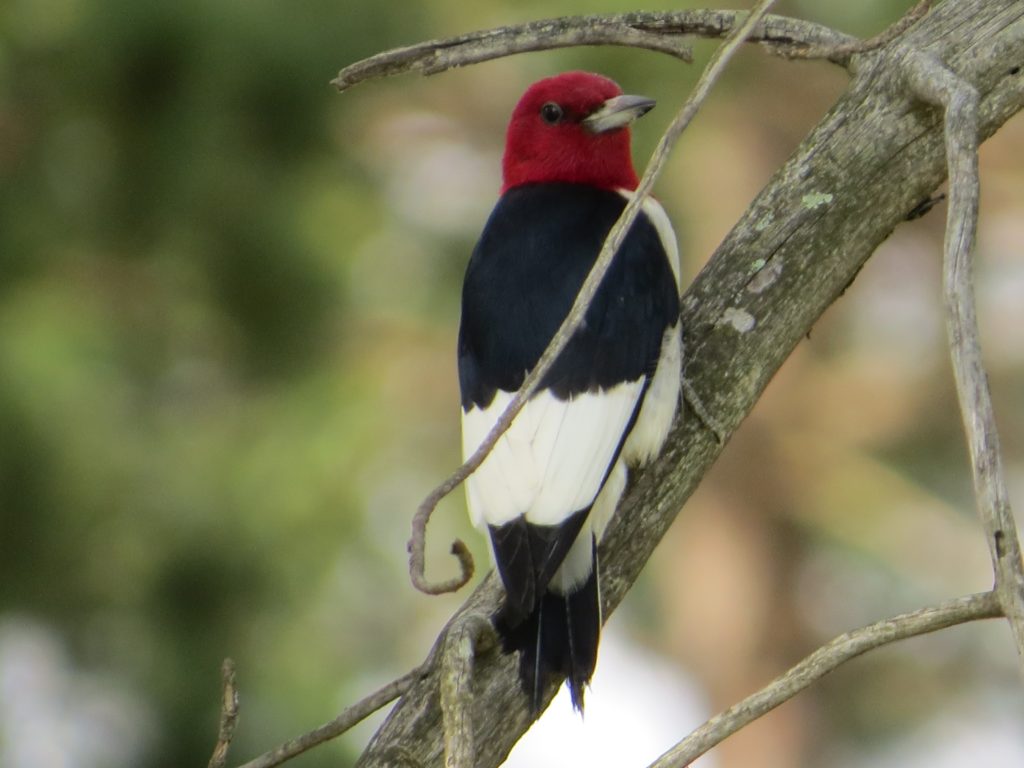 It’s unfortunate that we didn’t have more time to spend with these Woodpeckers at Necedah as other areas of Necedah required exploration before we had to break for supper, hotel check-in, and Kirtland’s scouting. But it’s good to know there is a place where one can go and see this species with ease.
It’s unfortunate that we didn’t have more time to spend with these Woodpeckers at Necedah as other areas of Necedah required exploration before we had to break for supper, hotel check-in, and Kirtland’s scouting. But it’s good to know there is a place where one can go and see this species with ease.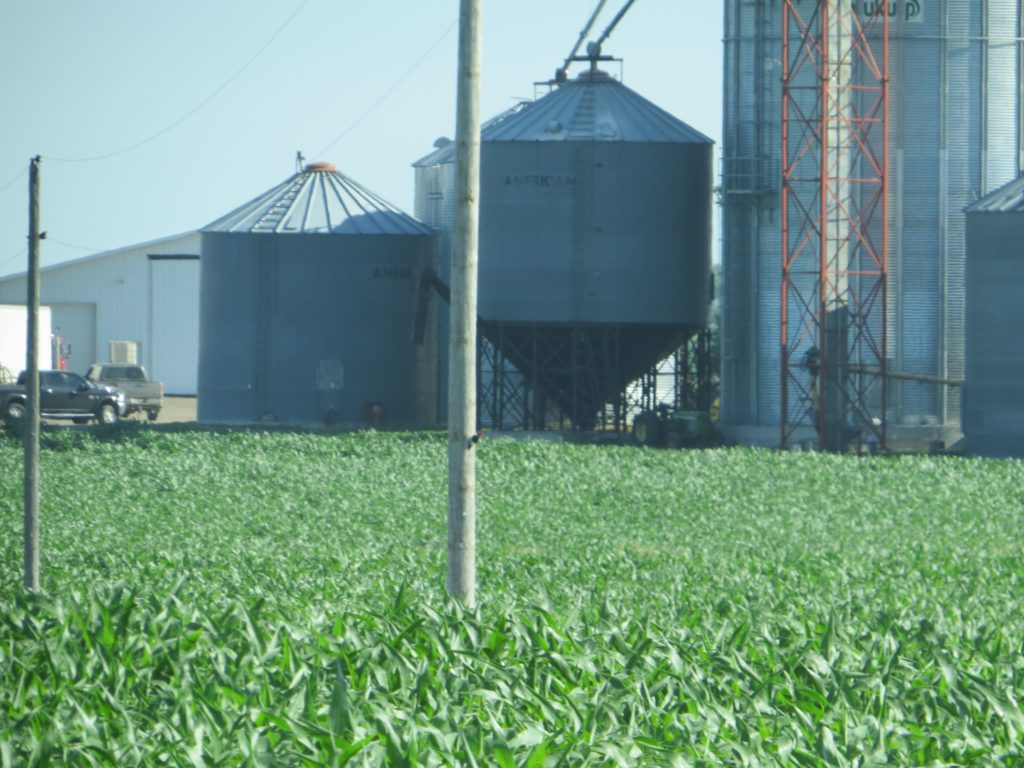
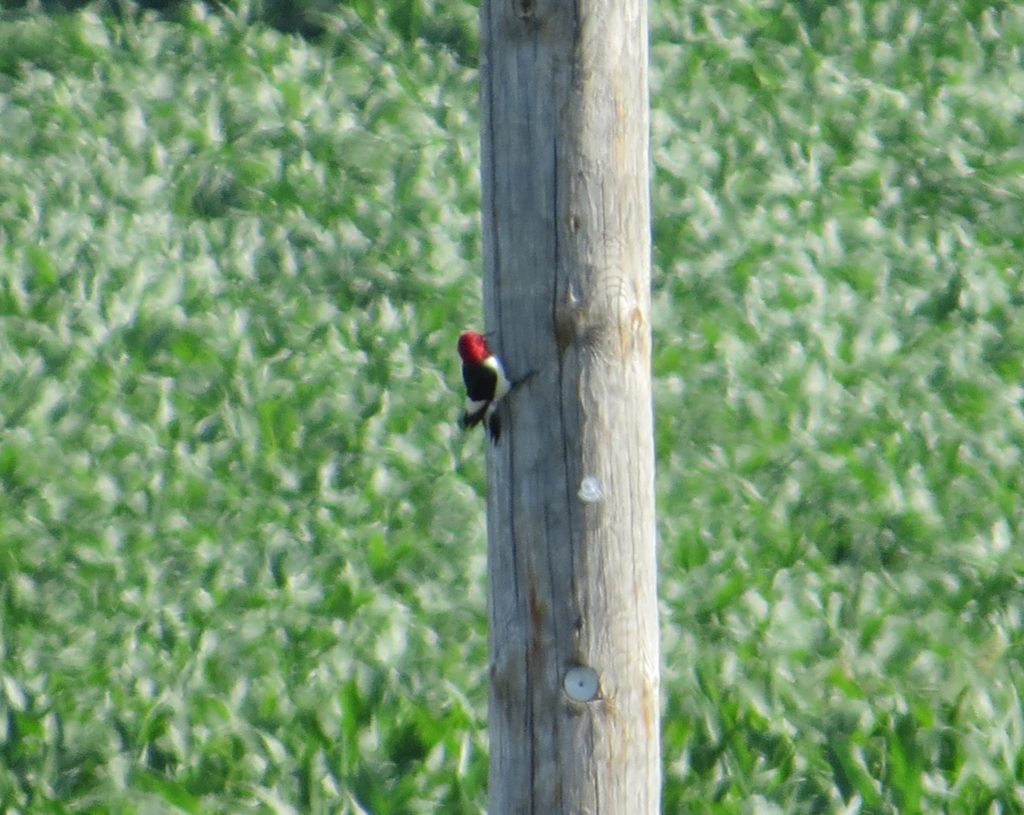
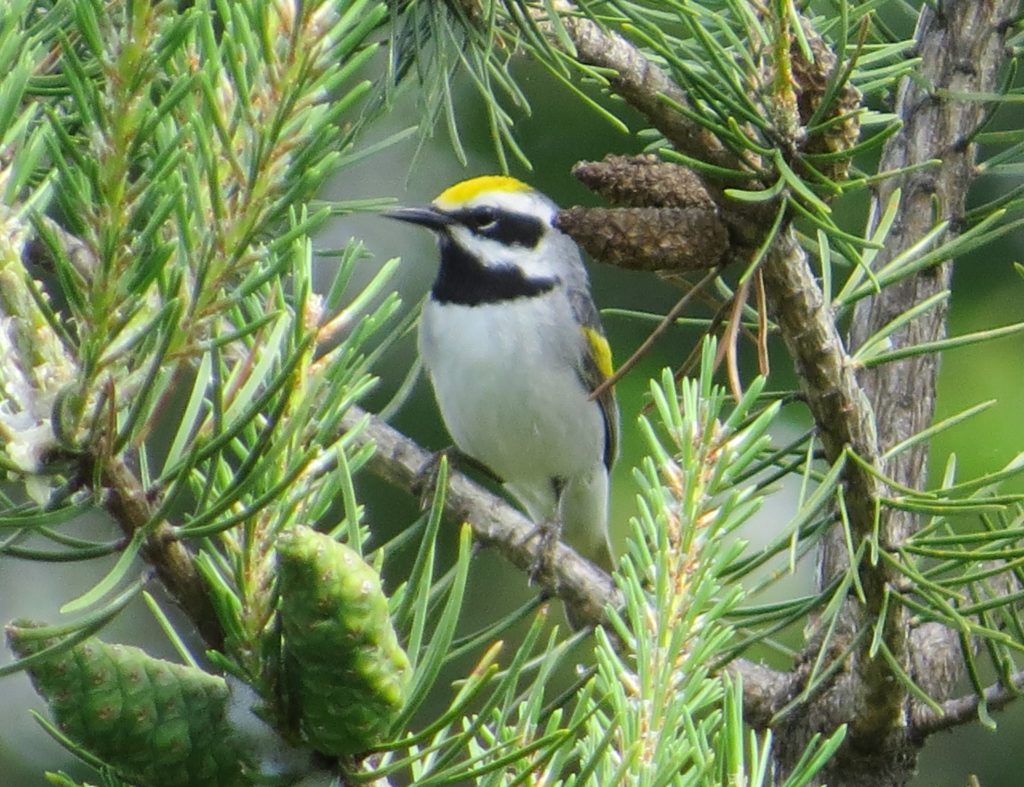 If Minnesota did not already claim (appropriately) the Common Loon as its state bird, the GWWA would make a fine choice. Minnesota plays host to roughly 50% of the world’s entire breeding population of this Warbler species. Wisconsin and Ontario are the other major stakeholders in rearing these birds. Maybe if most Wisconsinites knew this, they’d hold a referendum to denounce the Robin as their state bird and choose this Warbler instead.
If Minnesota did not already claim (appropriately) the Common Loon as its state bird, the GWWA would make a fine choice. Minnesota plays host to roughly 50% of the world’s entire breeding population of this Warbler species. Wisconsin and Ontario are the other major stakeholders in rearing these birds. Maybe if most Wisconsinites knew this, they’d hold a referendum to denounce the Robin as their state bird and choose this Warbler instead.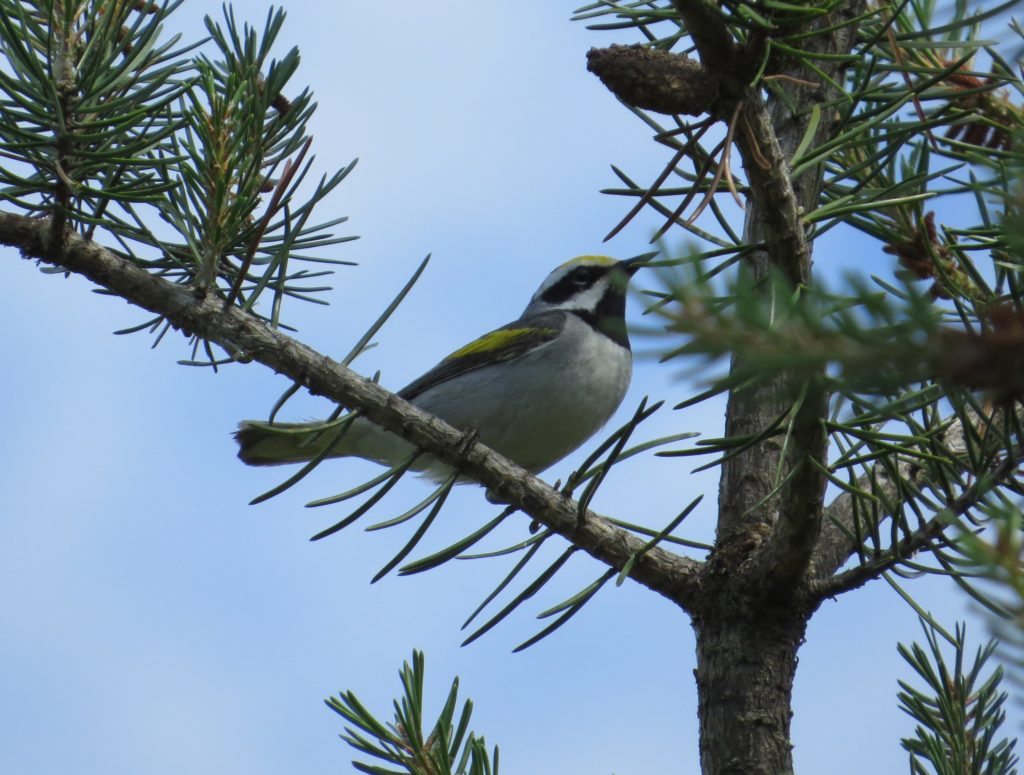 The Golden-wing’s preferred habitat is shrubby edges along wetlands and young forests. While the breeding population has remained stable in Minnesota over the last 45 years, this species has suffered a 60% population loss over that same time in the rest of its breeding range in North America. Even though Minnesota contains only 10% of the GWWA’s breeding range, we host nearly half of all the birds of this species. That puts an emphasis on just how much human development of wetlands and shrubby areas in other parts of the northeast has impacted this bird.
The Golden-wing’s preferred habitat is shrubby edges along wetlands and young forests. While the breeding population has remained stable in Minnesota over the last 45 years, this species has suffered a 60% population loss over that same time in the rest of its breeding range in North America. Even though Minnesota contains only 10% of the GWWA’s breeding range, we host nearly half of all the birds of this species. That puts an emphasis on just how much human development of wetlands and shrubby areas in other parts of the northeast has impacted this bird.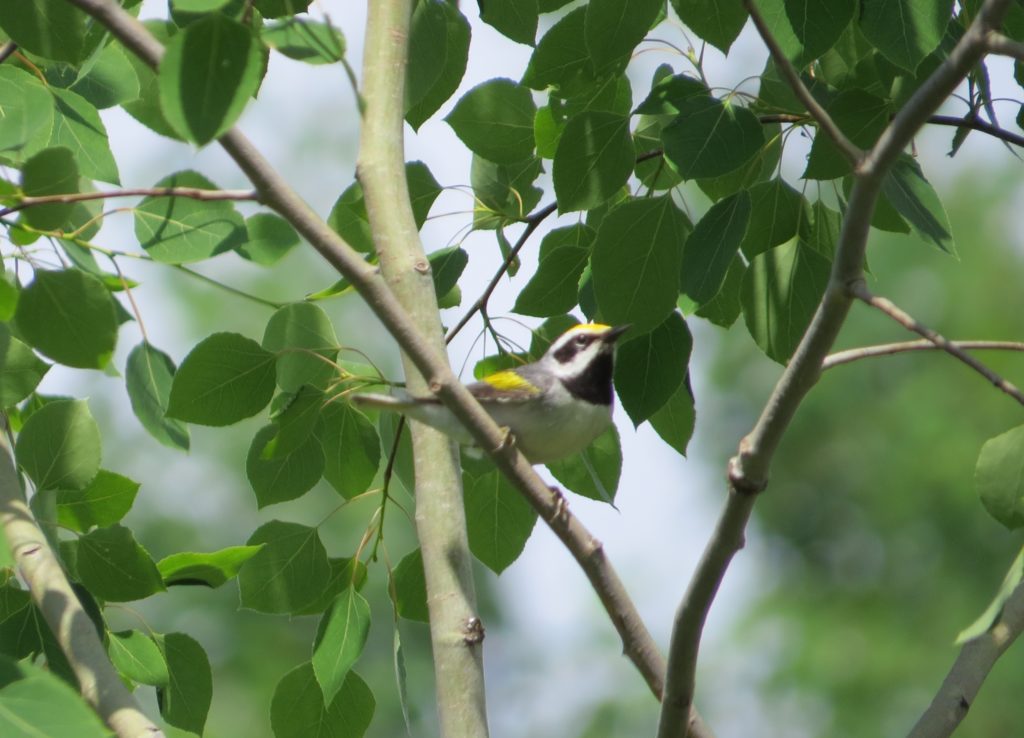 Besides human activity threatening this Warbler, the closely related Blue-winged Warbler is expanding its range in Minnesota. This is problematic because the more dominant Blue-wings prefer the same type of habitat.
Besides human activity threatening this Warbler, the closely related Blue-winged Warbler is expanding its range in Minnesota. This is problematic because the more dominant Blue-wings prefer the same type of habitat.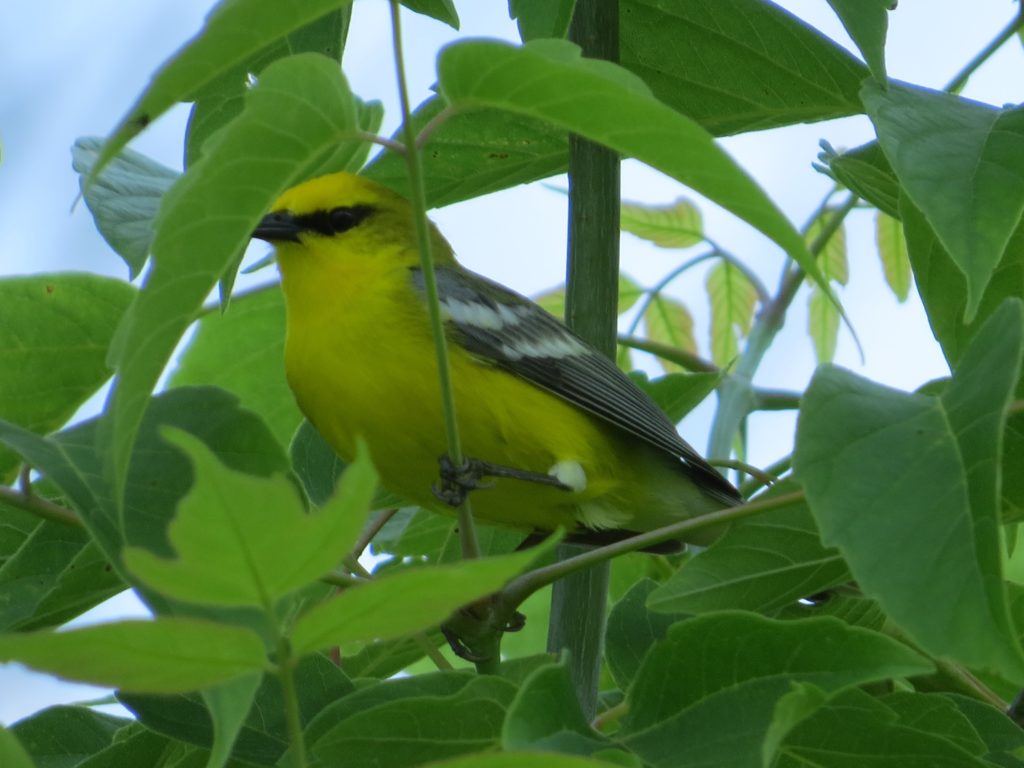 And when the Blue-wings aren’t kicking out the Golden-wings, they are hybridizing with them. I have yet to see one of the two main hybrids.
And when the Blue-wings aren’t kicking out the Golden-wings, they are hybridizing with them. I have yet to see one of the two main hybrids.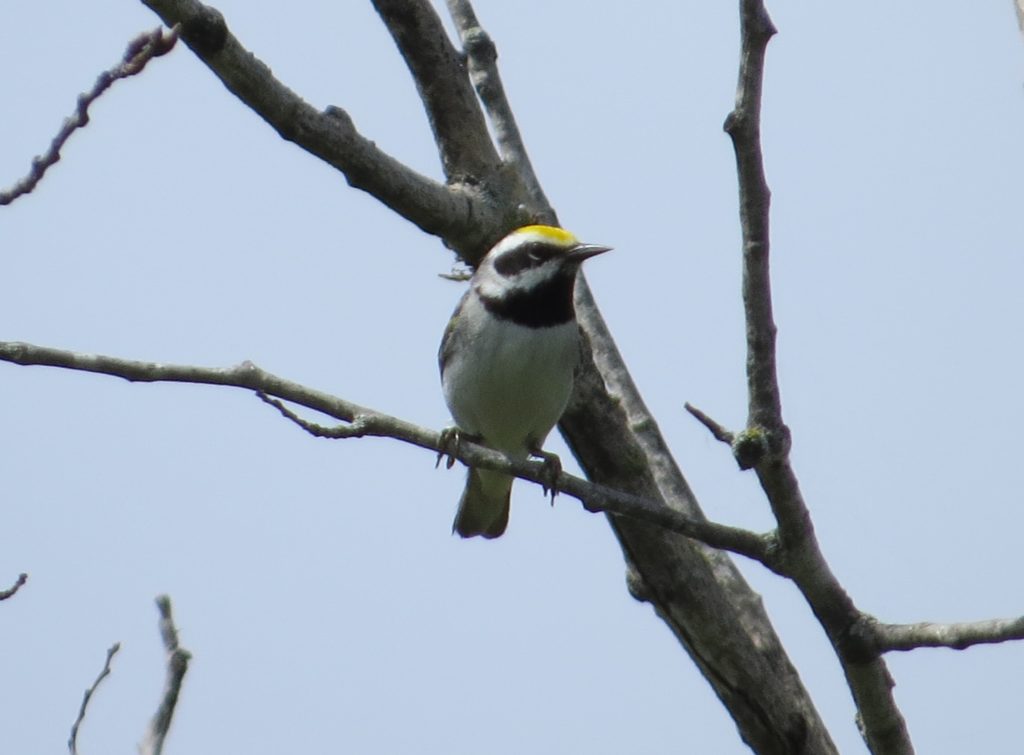 Like the Cerulean Warbler, the Golden-winged Warbler also winters in Central and South America, thriving in shade-grown coffee plantations. Again, another reminder to drink bird-friendly coffee. This beautiful home-grown bird is truly a treasure that needs all the help it can get.
Like the Cerulean Warbler, the Golden-winged Warbler also winters in Central and South America, thriving in shade-grown coffee plantations. Again, another reminder to drink bird-friendly coffee. This beautiful home-grown bird is truly a treasure that needs all the help it can get.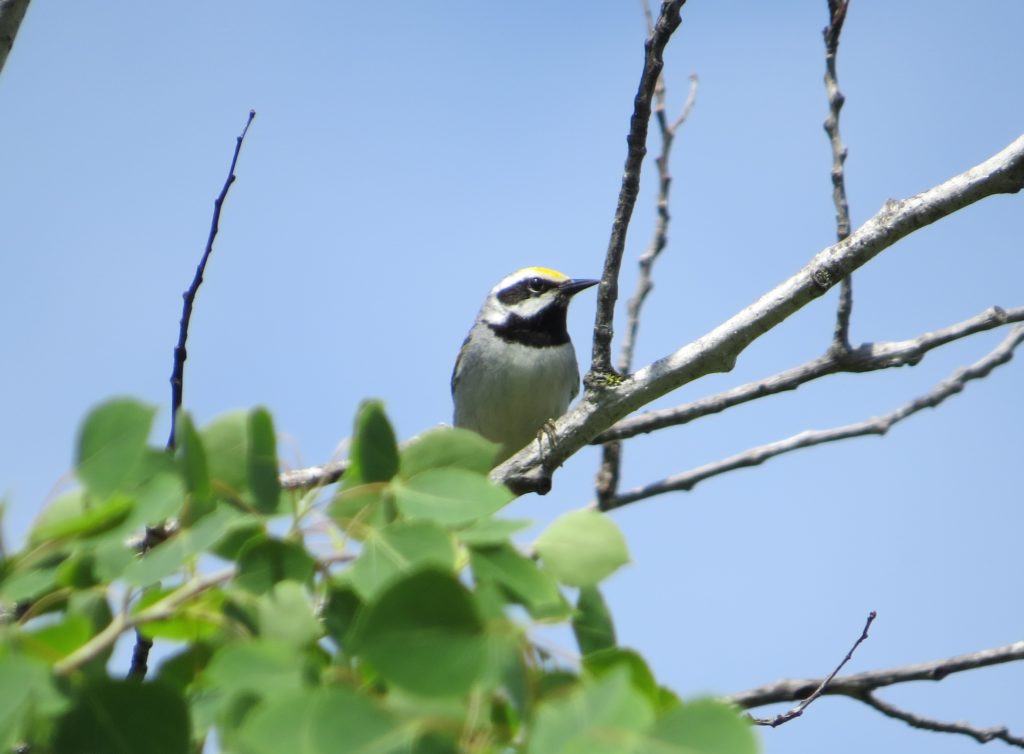 Knowing how fragile a species is makes you appreciate a sighting like ours all the more. Hopefully the Golden-winged Warbler has a bright future.
Knowing how fragile a species is makes you appreciate a sighting like ours all the more. Hopefully the Golden-winged Warbler has a bright future.